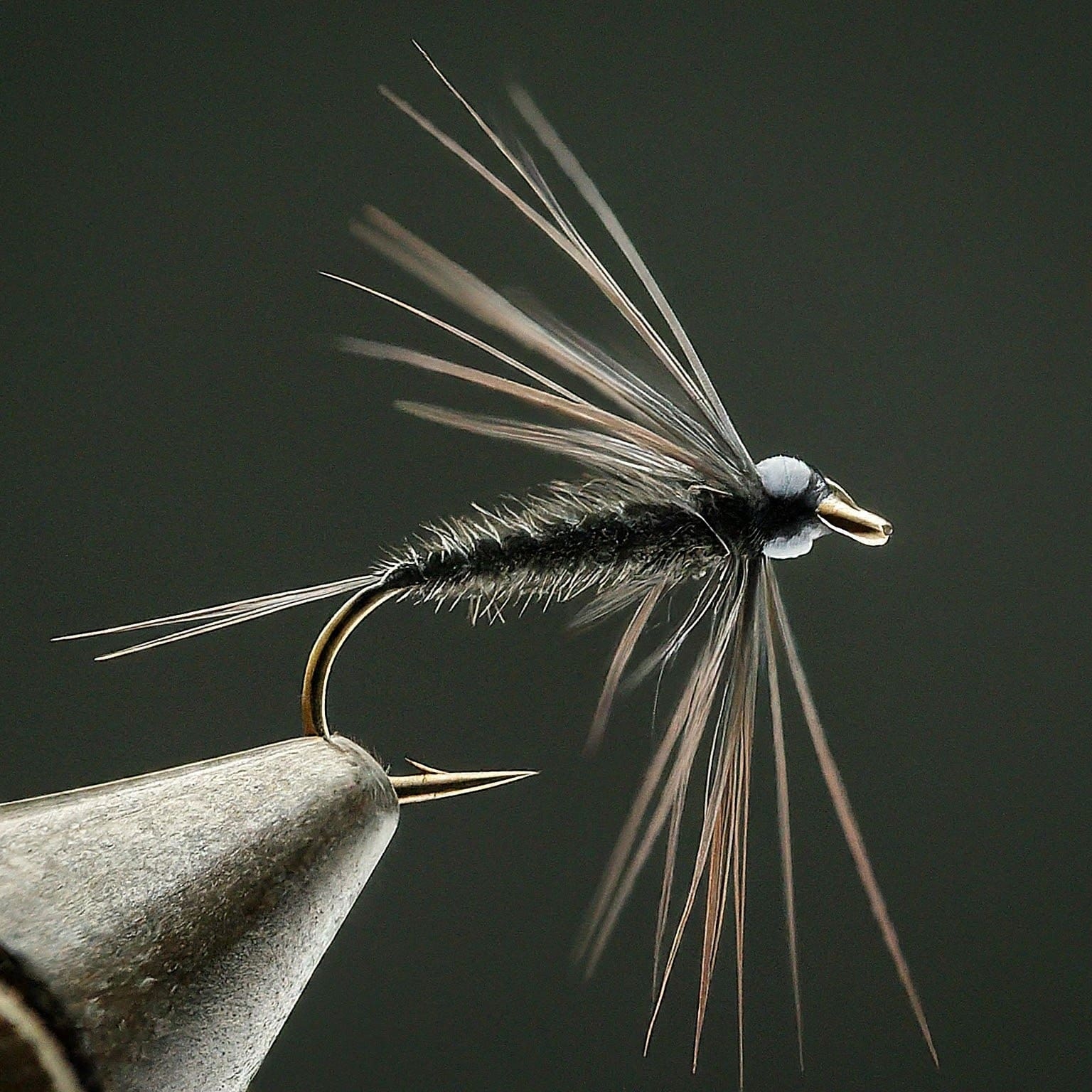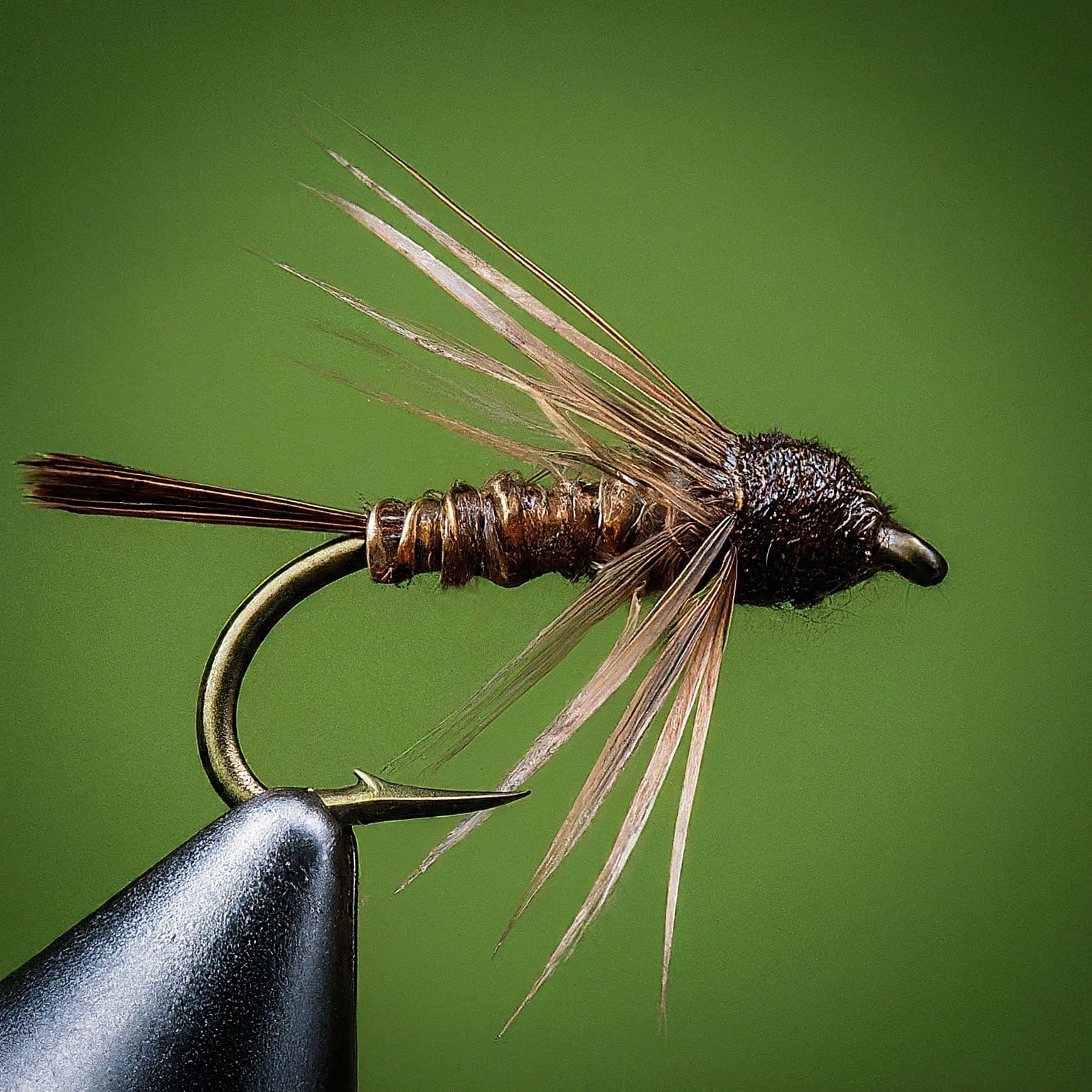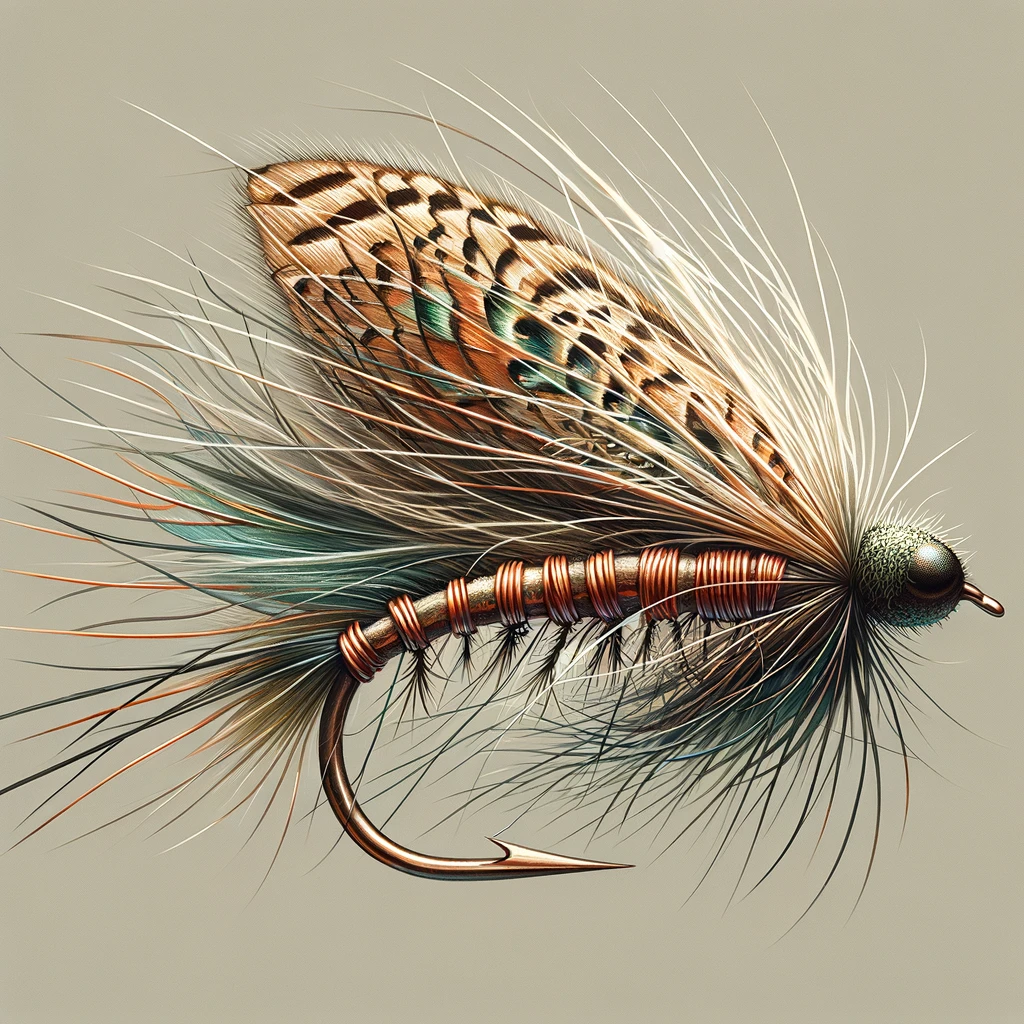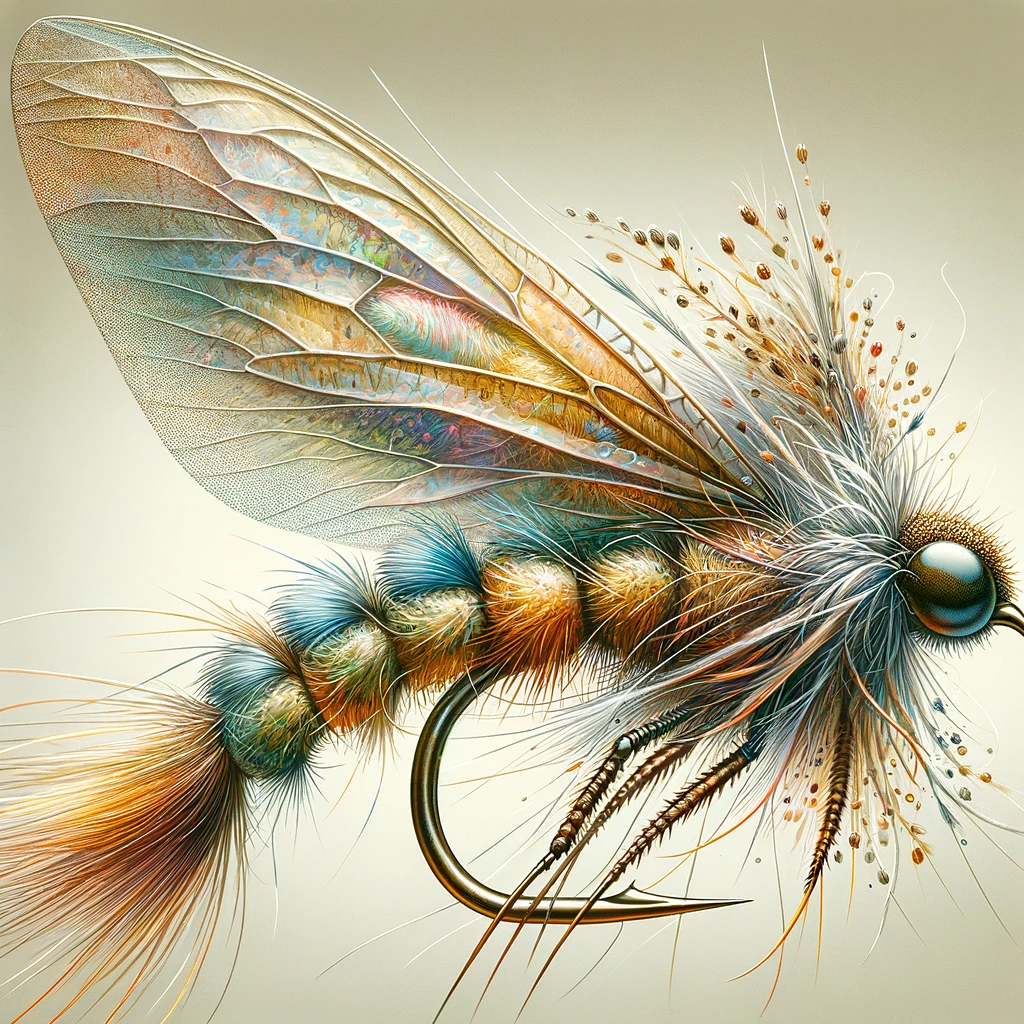🎣 Crack the Code to Fly Fishing Success
Ever watch a seasoned angler effortlessly reel in trout after trout while you cast and cast with nary a nibble?
Frustrating, right?
But here’s the secret weapon they might need to be sharing: the Bow River Hatch Chart.
Think of it as a magic decoder ring for the river, revealing the insect world that fuels the fish you crave.
Confused?
Imagine tiny bugs called “hatches” bursting from the water, transforming into tasty snacks for hungry trout.
Knowing when and what hatches are happening is the key to matching your fly to their exact meal, making you the ultimate underwater chef.
The Bow River Hatch Chart unlocks this knowledge, turning you from a frustrated spectator to a confident angler by introducing you to the Bow River Hatch Chart!
📘 Table of Contents: Bow River Hatch Chart 🎣
🪰 Hatch Chart: Match the Fly to the Moment
Your personal cheat sheet for fly hatches on the Bow River. Quick-match flies by month, water temp, and hatch type — all in one scrollable guide.
| Name | Type | Months | Time of Day | Water Temp (°C) | Fly Patterns | Fishing Tips |
|---|---|---|---|---|---|---|
| Blue Winged Olive | mayfly | Feb, Mar, Apr, Aug, Sep, Oct | afternoon, evening | 8-16 | Parachute BWO, CDC BWO Emerger, Pheasant Tail Nymph | Focus on slower water and seams. Use longer leaders and light tippets. |
| Pale Morning Dun | mayfly | May, Jun, Jul, Aug | morning, afternoon | 12-20 | PMD Sparkle Dun, PMD Cripple, PMD Nymph | Target riffles and runs during hatches. Look for rising fish in flat water sections. |
| Caddis | caddis | Apr, May, Jun, Jul, Aug, Sep | afternoon, evening | 10-22 | Elk Hair Caddis, X-Caddis, Caddis Pupa | Fish near banks and in riffles. Skate dry flies to imitate adult behavior. |
| Stonefly | stonefly | May, Jun, Jul | morning, afternoon | 8-18 | Stimulator, Chubby Chernobyl, Kaufmann’s Stone | Focus on fast water and near banks. Use heavy tippet as these flies often attract larger trout. |
| Midge | midge | Jan-Dec | morning, afternoon, evening | 0-20 | Griffith’s Gnat, Zebra Midge, WD-40 | Use light tippets and small flies. Focus on slow-moving water and pools. |
| Trico | mayfly | Jun, Jul, Aug, Sep | morning | 15-22 | Trico Spinner, Trico Parachute, Trico Cluster | Fish early in the morning. Use long, fine leaders and small flies. Look for rising fish in slower sections. |
| Hopper | terrestrial | Jun, Jul, Aug, Sep | afternoon, evening | 18-25 | Dave’s Hopper, Foam Hopper, Parachute Hopper | Fish near grassy banks on windy days. Use heavy tippet as larger trout often target hoppers. |
Beyond the Cheat Sheet: A Deeper Dive
But the Bow River Hatch Chart isn’t just a cheat sheet. It’s a gateway to deeper understanding.
You’ll explore fly-tying techniques, delve into the fascinating world of aquatic insects, and even learn sustainable fishing practices to protect the ecosystem you enjoy.
Remember, mastering the river isn’t just about catching fish; it’s about becoming part of its story.
Unlock Your Next Epic Fishing Adventure: The Bow River’s a vibrant ecosystem, teeming with insect life that fuels hungry trout.
Understanding their hatching patterns and their dance from water to air is the key to unlocking fly fishing success.
Here’s your breakdown by season, complete with fly recommendations.
🐠 Dive into the Bow River’s Hatch Dance: Charting Your Fly Fishing Success 📊
As the snow melts and temperatures rise, the Bow River awakens with a flurry of midge activity. This essential hatch is your chance to experience spring fly fishing at its finest. ❄️
Bow River Hatch Chart: Spring (April–May)
A Buzzing Awakening Month
| Month | Hatch | Timing | Description | Hook Size | Fly Types |
|---|---|---|---|---|---|
| April | Midges | All month | Tiny, year-round insects | #20–24 | Griffiths Gnat, Emergent Midge, Parachute Adams |
| April | Skwala Stonefly | Mid-late April | Large, early stonefly | #8–12 | Nymph, Stimulator |
| May | Blue-winged Olive (BWO) | Early May | Delicate mayfly | #16–18 | BWO Dry, CDC BWO, Adams, BWO Nymph |
| May | March Brown | Mid-May | Larger mayfly | #14–16 | March Brown Dry, Nymph, Emerger |
| May | Caddis | Late May | Diverse group of flies | #10–18 | Elk Hair Caddis, X-Caddis, Micro Caddis |
Bow River Hatch Chart: Summer (June–August)
A Feast for the Eyes (and Fish) Month
| Month | Hatch | Timing | Description | Hook Size | Fly Types |
|---|---|---|---|---|---|
| June | Pale Morning Dun (PMD) | Early June | Delicate mayfly | #16–18 | PMD Dry, Emerger, Nymph |
| June | Golden Stonefly | Mid-June | Large, golden stonefly | #8–12 | Nymph, Stimulator, Attractor |
| June | Green Drake | Late June | Large, olive mayfly | #10–14 | Green Drake Dry, Emerger, Nymph |
| July | Trico | All month | Tiny, prolific mayfly | #20–24 | Trico Dry, Emerger, Nymph |
| July | Caddis | All month | Diverse group of flies | #10–18 | Elk Hair Caddis, X-Caddis, Micro Caddis |
| July | Terrestrials | All month | Land-dwelling insects falling on water | #10–16 | Grasshoppers, Ants, Beetles |
| August | Spruce Moths | Late August | Nocturnal moth attracted to lights | #10–14 | Stimulator, Moth-like patterns |
🪰 Trico dance, Golden giants, Green Drakes galore! Summer on the Bow is a fly fisher’s dream.
Bow River Hatch Chart: Fall (September–October)
A Final Encore Month
| Month | Hatch | Timing | Description | Hook Size | Fly Types |
|---|---|---|---|---|---|
| September | Blue-winged Olive (BWO) | Early September | Delicate mayfly | #16–18 | BWO Dry, CDC BWO, Adams, BWO Nymph |
| September | Mahogany Dun | Mid-September | Dark-winged mayfly | #14–16 | Mahogany Dun Dry, Emerger, Nymph |
| September | Trico | Early September | Tiny, prolific mayfly | #20–24 | Trico Dry, Emerger, Nymph |
| October | October Caddis | Mid-October | Large, dark caddisfly | #10–14 | Elk Hair Caddis, X-Caddis, Micro Caddis |
| October | Midges | All month | Tiny, year-round insects | #20–24 | Griffiths Gnat, Emergent Midge, Parachute Adams |
✨ Don’t miss the encore! BWOs, Tricos, and Caddis take center stage for a spectacular fall finale.
Remember: This is a general guide, and specific hatches can vary year-to-year depending on weather and water conditions.
Consult local fly shops and resources for the most up-to-date information, and be ready to adapt your approach based on what you see on the river.
Now, with this knowledge in your pocket, grab your rod, step onto the Bow River’s banks, and dance with the hatches!
🎣 Decoding the Dance: A Guide to Bow River Hatches for New Anglers 🐛
Ever cast your line on the Bow River, mesmerized by the crystal-clear water, only to be met with silence?
Don’t worry, friend; the fish are there, but they might be waiting for a specific invitation — the hatch!
Imagine tiny aquatic insects bursting from the water, transforming into an array of hungry trout.
Understanding these “hatches” is the key to unlocking your fly fishing success, and the Bow River Hatch Chart is your secret decoder ring.
🌱 Springtime Snack: Mastering the Midge Mania on the Bow River 🎣
A symphony of life unfolds as the Bow River thaws from winter’s slumber.
Tiny midges, barely visible to the naked eye, orchestrate a spectacular aerial performance, their delicate wings creating a soft hum that fills the air.
This “midge hatch” is not just a visual spectacle; it’s a crucial food source for trout, kicking off the spring-feeding frenzy.
Bow River Hatch Chart: Emergent Midget and Nymph Midget that Browns Love
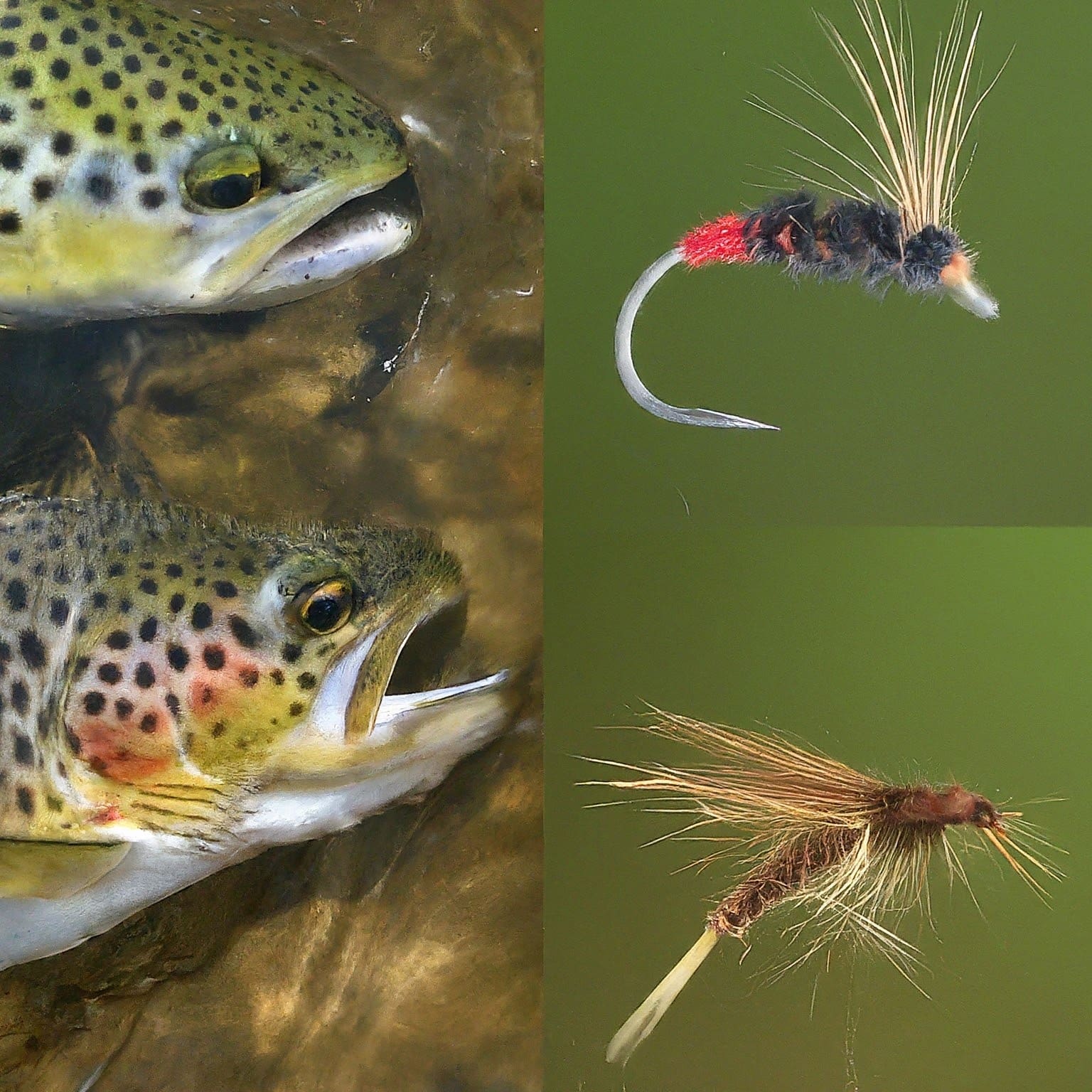
This visual captures two of the most effective spring midge patterns — the emergent midge and the nymph midge — that big browns can’t resist in early season waters.
Keep your presentation subtle and your tippet fine. When the hatch is on, these flies can be unstoppable.
Match the Minis: Bow River Hatch Chart
Unlike fall Midges, their spring counterparts are slightly larger. Opt for size #18–22 flies like Griffiths Gnats or tiny Emergent Midges (Nymph Midget).
Choose colours like black, brown, and red to experiment and see what the fish prefer.
Selecting the right flies, resembling the various stages of the midge’s life cycle, can unlock fishing success.
Here are some proven performers:
- Zebra Midge: A universal favourite, mimicking both pupae and emerging adults with its black and silver body.
- Griffith’s Gnat: A versatile pattern, effective as an adult midge or emerging caddisfly.
- RS2: A classic pupa imitation, often fished deep in the water column.
- Top Secret Midge: True to its name, this fly boasts a segmented body and realistic wing for a convincing emerger.
- Mercury Midge: Weighted for deeper presentations, mimicking pupae or sinking midges.
- CDC Midge Adult: This dry fly features natural-looking CDC fibres, mimicking adult midges floating on the surface.
- Fuzzy Wuzzy: A simple but effective fly, often used as a pupa or attractor pattern.
- Disco Midge: Flashy and small, this fly can attract attention when fish feed actively.
Reading the River: Tailoring Tactics for Trout’s Midge Preferences
Observing the water and understanding trout behaviour is crucial.
Are fish focused on subsurface activity, indicating pupae or larvae?
Or are they rising to the surface, suggesting emergers or adult midges?
Start with subsurface patterns like larvae and pupae, then switch to emergers and adults as the hatch progresses.
The Tippet Edge: Perfecting Presentation with Ultra-Fine Lines
Don’t underestimate the importance of tippet size.
Fine tippets, like 6X or 7X, ensure the natural presentation of your tiny flies, making them irresistible to even the most discerning trout.
Mastering Midges: The Art of Adaptation with the Bow River Hatch Chart
Midge Mastery: Unlocking the Secrets of Tiny Triumphs!
- Patience is gold: Midges are finicky, so experiment with presentations and colours.
- Find the perfect hue: Match the hatch with diverse fly selections.
- Masterful presentations: Unlock the key to their strike zone.
- Hatch Chart your guide: Time the hatch and strategize your outing.
- Tight lines, happy fishing: Success is just a cast away!
Gear up the Bow River Hatch Chart for victory! Hit the shop now and conquer the midge challenge!
🎣 Featured Midges for the Bow River Hatch Chart
🌸 Springtime Sizzle: Conquering the Skwala Stonefly Frenzy With the Bow River Hatch Chart 📊
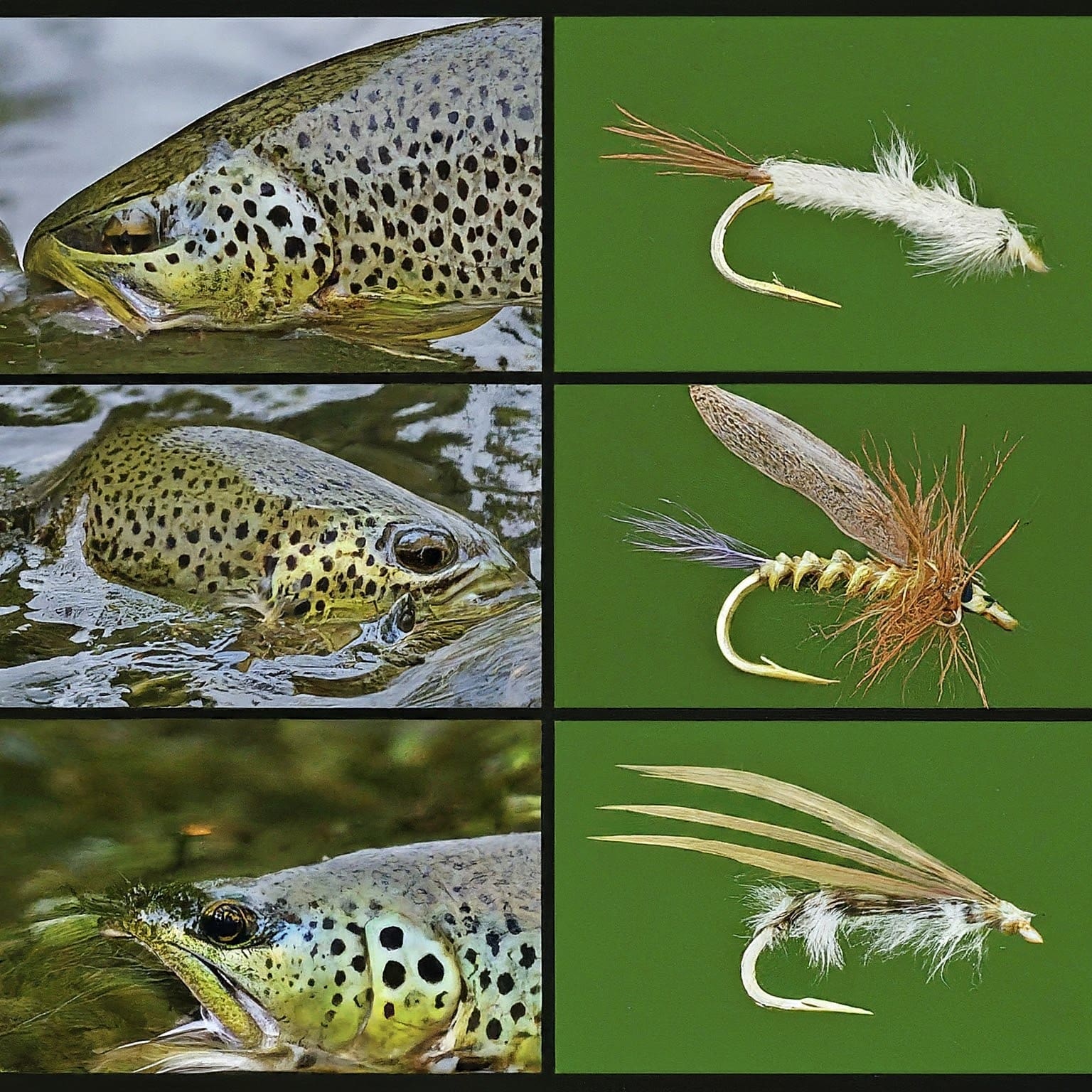
The Bow River vibrates with life, and among the first to join the party are the Skwala Stoneflies, hatching from April to May!
These big, juicy insects trigger a feeding frenzy in trout, making them a prime target for anglers seeking springtime success.
Here’s your guide to navigating the Skwala Stonefly hatch and unlocking early season action.
Gear Up for Giants: Choosing the Right Skwala Patterns for Bigger Catches
Skwalas are more significant than your average fly, so adjust your tackle. Opt for size #8–12 Skwala Stonefly patterns like:
- Skwala Stonefly Dry Fly: Mimics adult insects perfectly, ideal for calm mornings and evenings.
- Pat’s Rubber Legs: Adds lifelike movement and attracts attention, especially in faster water.
- Bulldog Skwala: A heavy fly for deeper water, effective with strong currents.
- Foam Skwala Stonefly: Floats effortlessly, ideal for imitating emergers or drifting over weeds.
- Rogue Skwala: A unique variation with a segmented body attracts curious fish.
- Double Bead Stonefly Nymph: Imitates the nymph stage, perfect for subsurface presentations.
Unlocking Success: Observing Trout Behaviour and Perfecting Presentation Techniques
Look for rising trout and surface activity, especially near riffles or rocky areas. Pay attention to hatching patterns and adjust your fly accordingly.
Unlocking Success: Observing Trout Behaviour and Perfecting Presentation Techniques
- Dead-drift your dry fly: Perfect for mimicking emergences with little movement.
- Twitch your Pat’s Rubber Legs: Add subtle action to simulate a struggling nymph.
- Fish nymphs upstream: Especially effective in deeper pools where trout hold low.
Strategic Insights: Mastering Skwala Feeding Habits with the Bow River Hatch Chart
Skwala Challenge: Crack the Code, Catch the Glory!
- Patience is vital: Skwalas are picky, so be prepared to adapt.
- Match the hatch: Size, colour, and presentation are crucial.
- Tweak your technique: Experiment to find what triggers their strike.
- Observe their behaviour: Watch for feeding cues and adjust accordingly.
- Hatch Chart your weapon: Time the hatch and choose the perfect fly.
- Smooth casts, tight lines: Master your presentation for success.
Ready to transform your fly fishing adventures? Hit the shop now and unlock Skwala Glory!
🔥 Top Skwala Patterns to Boost Your Strike Rate
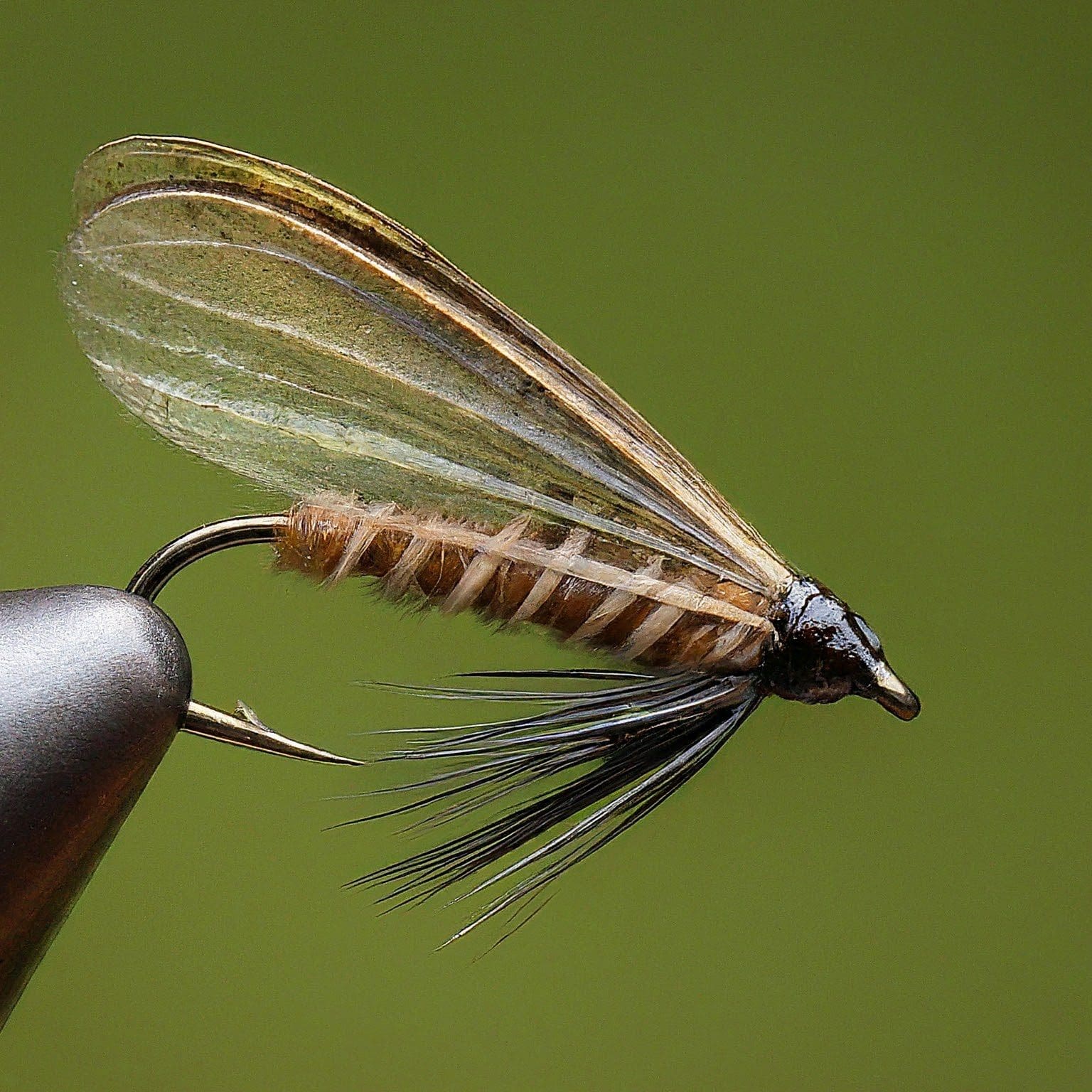
Size 8 Skwala Stonefly Dry Fly
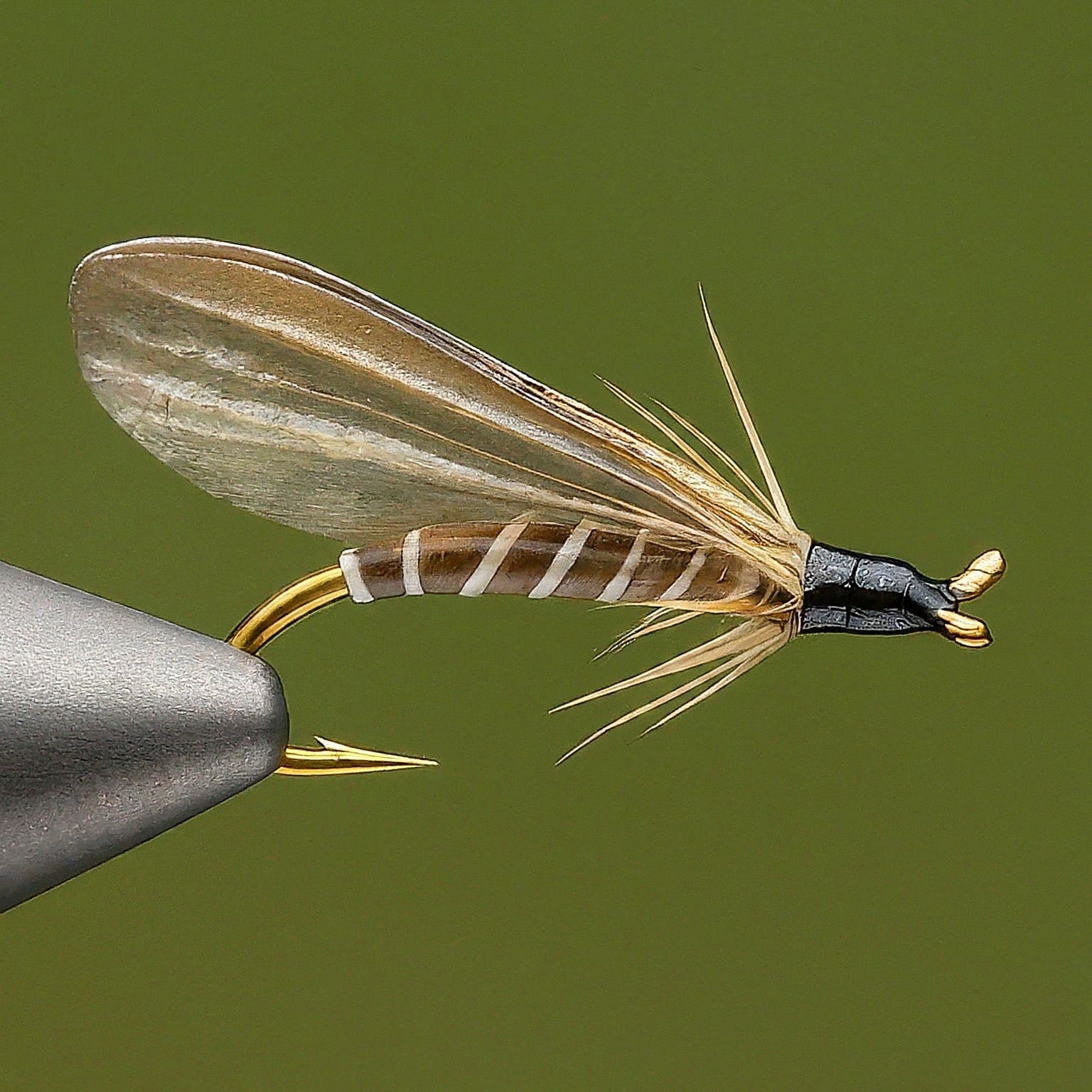
Red Griffith Gnat Nymph Stonefly
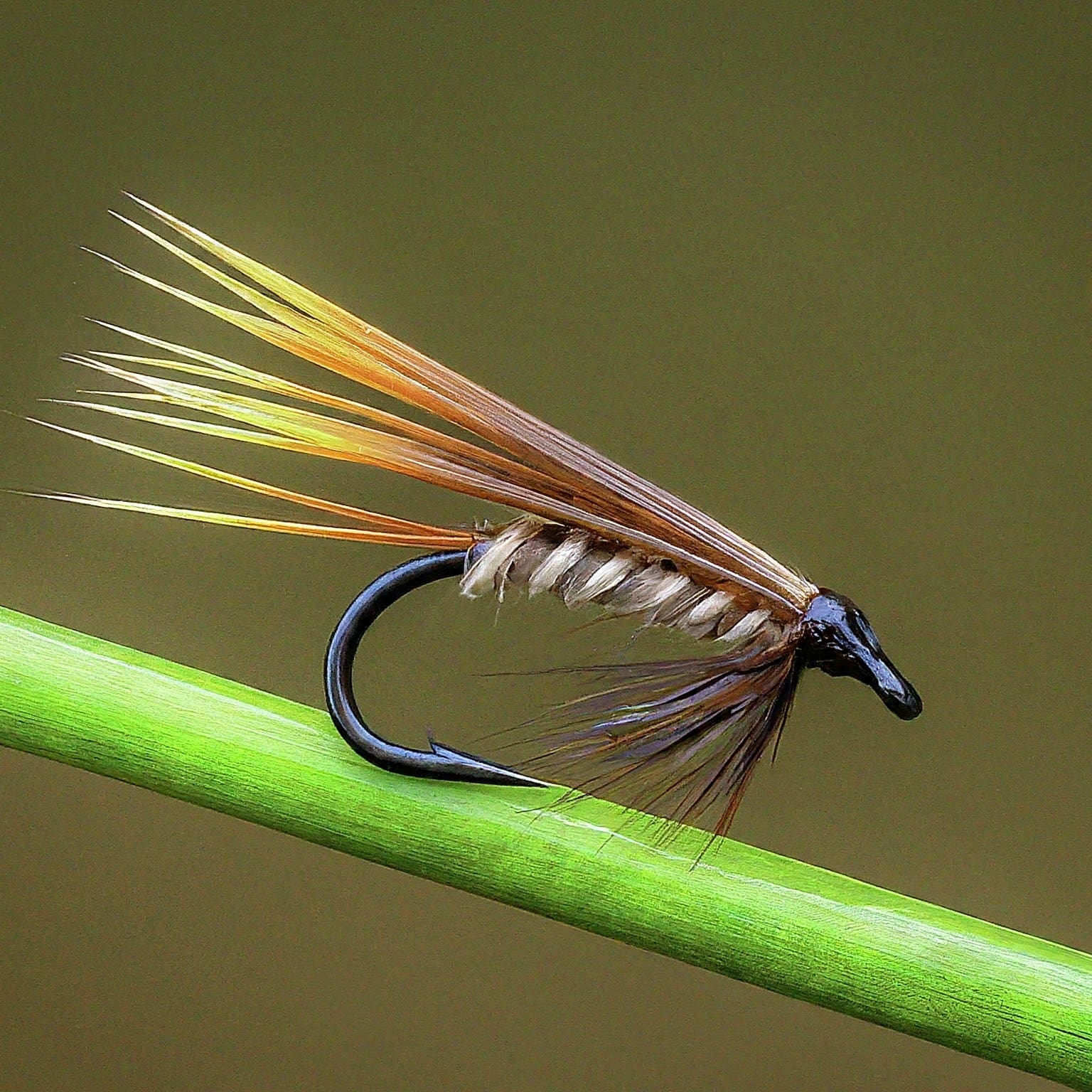
Size 12 Skwala Stonefly Pattern
🎼 Spring Symphony: Unraveling the Blue-winged Olive Bonanza on the Bow River 🐟
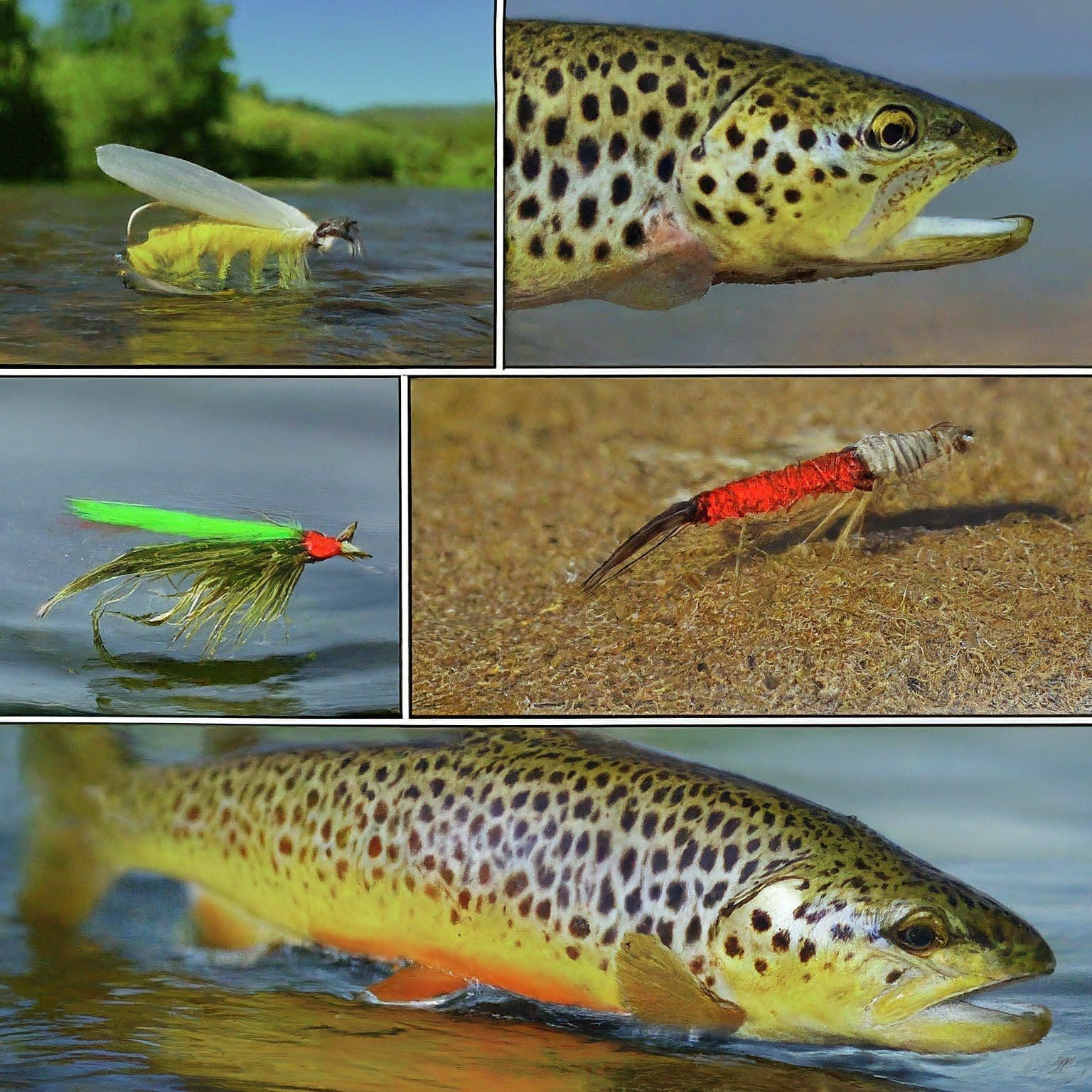
Spring paints the Bow River in vibrant hues, and so do the hatches!
Among them, the Blue-winged Olive (BWO) takes center stage from April to May, offering an exciting opportunity for anglers.
Let’s dive into the secrets of this prolific hatch and what makes it a must-watch event in the fly fishing calendar.
Matching the Hatch: Selecting the Right BWO Patterns Using the Bow River Hatch Chart
BWOs are delicate, so choose flies in sizes #16–20. Popular patterns include:
- Pheasant Tail Nymph: A classic nymph imitation, perfect for subsurface presentations.
- RS2: A versatile nymph with a bead head, practical in various water depths.
- BWO Sparkle Dun: Adds a touch of flash, attracting attention in low light or choppy water.
- Comparadun BWO: A dry fly that rides high on the water, ideal for calm mornings.
- BWO Emerger: Mimics the transition from nymph to adult, a critical stage for feeding trout.
- F-Fly: A dry fly with parachute wings, offering excellent visibility and floatability.
- BWO Parachute: Similar to the F-Fly, but with a different wing style and presentation.
- Olive Micro Mayfly Nymph: A tiny nymph for picky trout, especially for light tippets.
Timing and Technique: Mastering BWO Hatches with Smart Presentations on the Bow River
BWOs hatch throughout the day, but mornings and evenings are prime times. Look for rising trout, dancing mayflies on the water, and emerging insects clinging to rocks or vegetation.
Presentation Matters: Experiment with different techniques. Drift your dry fly naturally, twitch your nymphs for a struggling insect, or fish your nymphs upstream for subsurface action.
Strategic Patience: Leveraging the Bow River Hatch Chart for BWO Success
BWO Bonanza: Master the Bow River Hatch Chart Delicate Dance!
- Patience is vital: BWOs are picky, so experiment with flies and techniques.
- Variety is critical: Match their mood with different fly patterns and presentations.
- Hatch Chart your weapon: Anticipate hatches and choose the perfect fly.
- Smooth casting wins: Master your presentation for the ultimate strike.
- Great fishing awaits. Are you ready to elevate your game?
Hit the shop now and unlock BWO mastery with these bead-head nymphs!
Top Blue-winged Olive Fly Picks
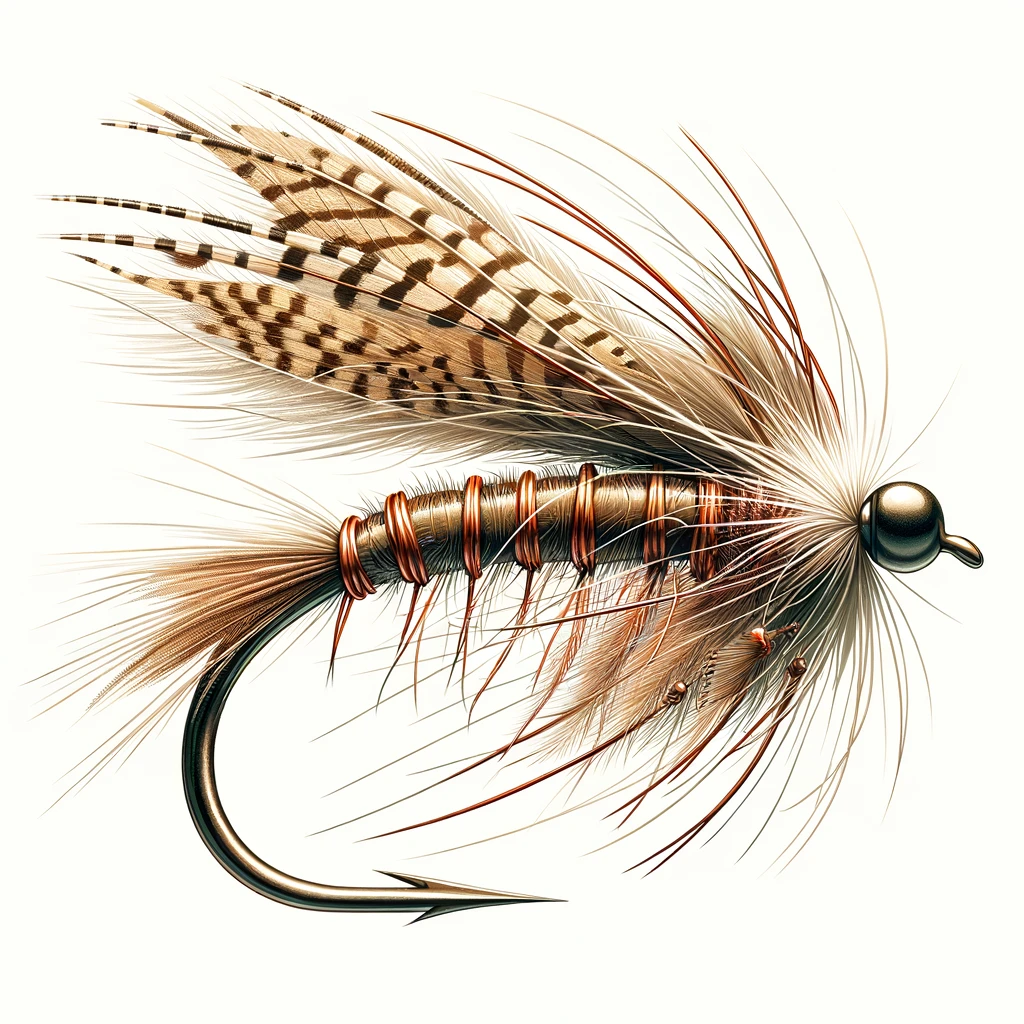
Size 18 Pheasant Tail
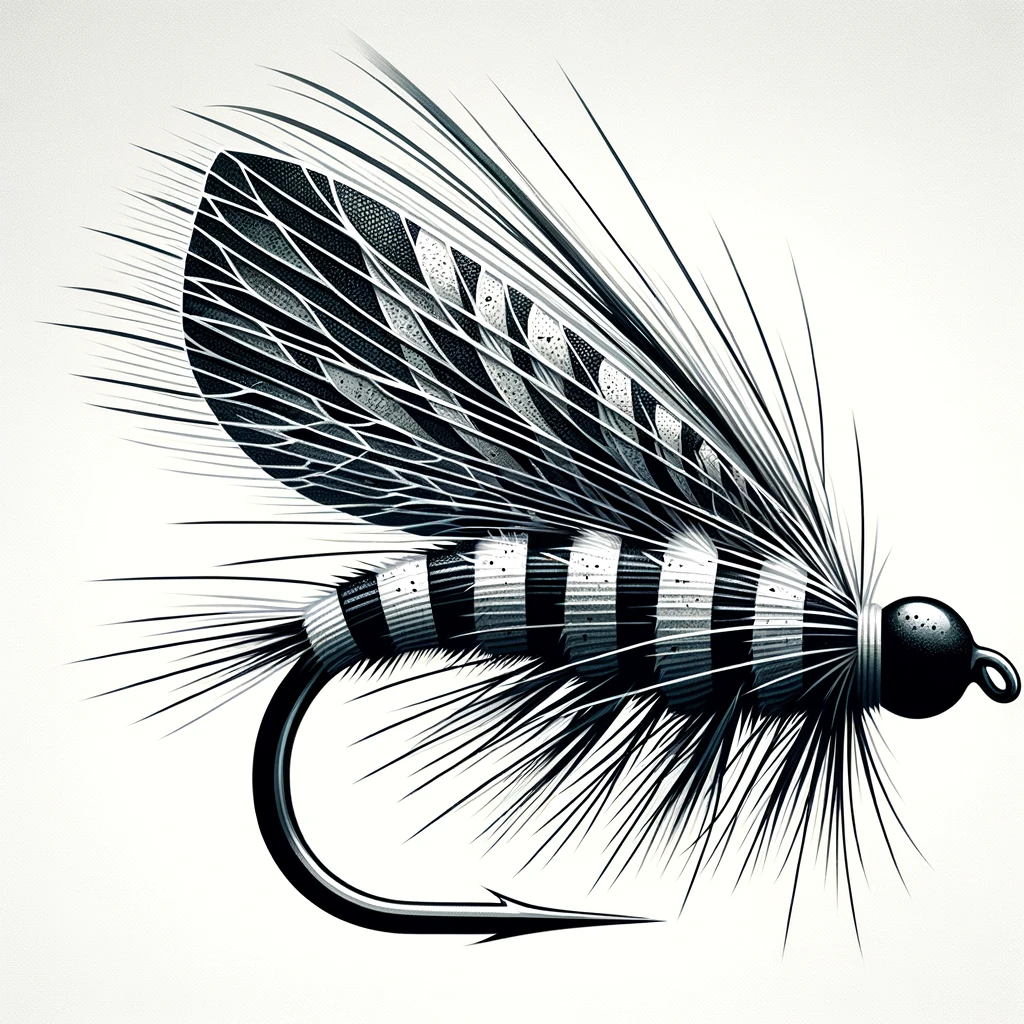
Zebra Midge Size 18
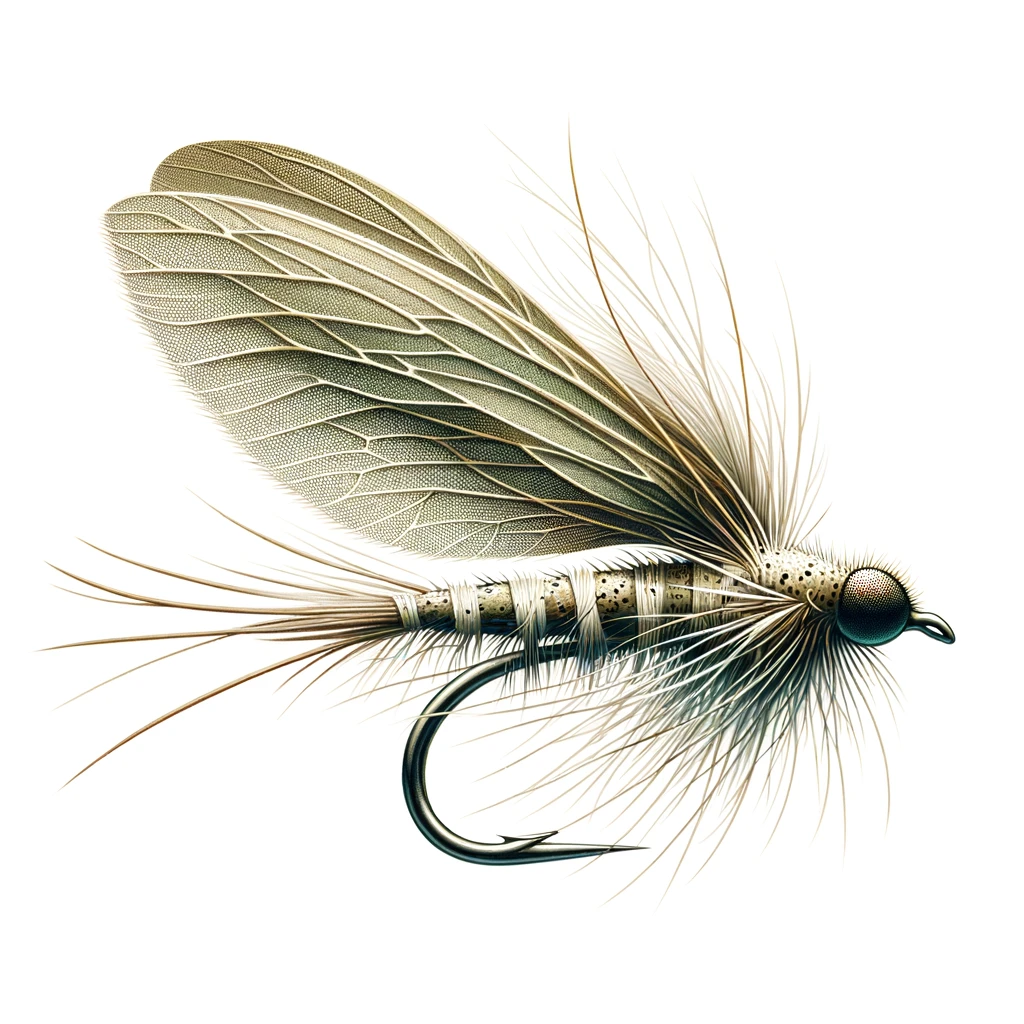
CDC Midge Adult Size 18
🎣 Bow River Hatch Chart Surface Spectacle: Duns in the Spotlight with March Brown Dry Flies and Comparaduns 🐟
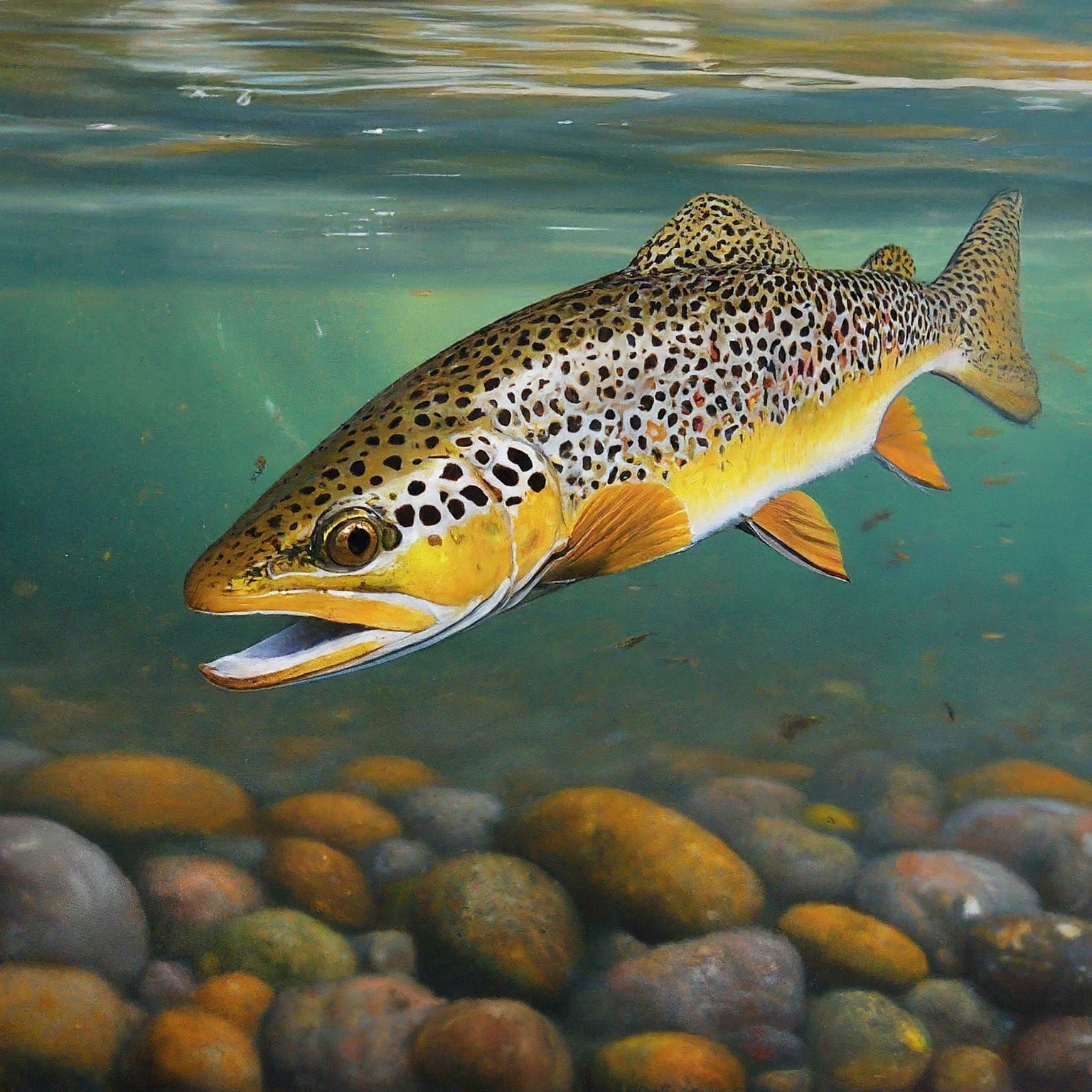
The fully formed adults, duns, gracefully glide on the water, offering a visual feast for trout.
Classic March Brown Dry Flies and Comparadun March Browns in sizes #10–#14 replicate this stage perfectly, tempting surface-feeding fish.
Enhanced Attraction: The Irresistible Appeal of Parachute March Browns for Surface-Feeding Trout
For even better visibility, Parachute March Browns in sizes #10–#14 offer a buoyant platform that mimics the dun’s resting posture, making them hard to resist for trout cruising the surface.
Final Act: Mimicking the Fluttering Spinners with Rusty Spinners to Entice Opportunistic Trout
After mating, the females return to the water as spinners, their wings fluttering erratically.
Rusty Spinners in sizes #10–#14 capture this stage, offering a final chance to fool opportunistic trout.
Harmonizing with the Hatch: Mastering the Art of Fly Selection Through the Stages of a March Brown Hatch
Remember, adaptability is key. Observe the trout’s behaviour and the hatch’s stage.
Start with Sparkle Dun March Browns and emergers, then switch to duns and spinners as the hatch progresses.
Adjust your fly choice based on the time of day and feeding patterns to harmonize with the river’s rhythm.
Flash of Brilliance: Enhancing Your Dry Fly Arsenal with Sparkle Dun March Browns
For an extra touch of attraction, consider Sparkle Dun March Browns, adding a hint of flash to your dry fly presentation.
Bow River Hatch Chart: Mimicking the Metamorphosis
A deep dive into its life cycle is essential to match the March Brown hatch effectively. Here’s a guide to the best fly patterns for each stage:
- Nymph: In anticipation of the hatch, the riverbed teems with nymphs. Opt for Hare’s Ear Nymphs or Pheasant Tail Nymphs in sizes #10–#14 to mimic their dark silhouettes and lifelike dimensions, tempting the trout below.
- Emerger: Rising nymphs transform into emergers. CDC Emergers or Soft Hackles in sizes #12–#14, with their detailed segmentation and natural appeal, perfectly represent this crucial phase.
- Dun: As the hatch reaches its zenith, adult duns alight upon the water. The March Brown Dry Fly or Comparadun March Brown in sizes #10–#14, boasting reddish-brown hues and delicate wings, become the epitome of allure.
- Parachute: Enhancing visibility, Parachute March Browns in sizes #10–#14 offer a prime dry fly choice, their wings spread wide to mimic the dun’s serene poise atop the water.
- Spinner: Post-mating, the females grace the water once more as spinners. With their subtle wing flutter and signature motion, Rusty Spinners in sizes #10–#14 authentically mirror this concluding act.
- Sparkle Dun March Brown: Adding a sparkle to your presentation, this variant stands out during the hatch, capturing the dun’s essence in sizes #10–#14 with added visual appeal.
Syncing with Nature: Leveraging the Bow River Hatch Chart for March Brown Mastery
March Brown Magic on the Bow: Be Part of the Buzz!
Unlock the secrets of the March Brown hatch! Understand their life cycle and adapt your flies to the river’s rhythm.
🎣 Experience the thrill:
- Match the hatch: Nymphs, emergers, and dries for every stage.
- Witness the spectacle: Witness the river come alive.
- Create lasting memories: A springtime symphony for the soul.
Ready to join the dance? Shop now and unlock March Brown magic!
🔥 Top March Brown Patterns to Match the Hatch
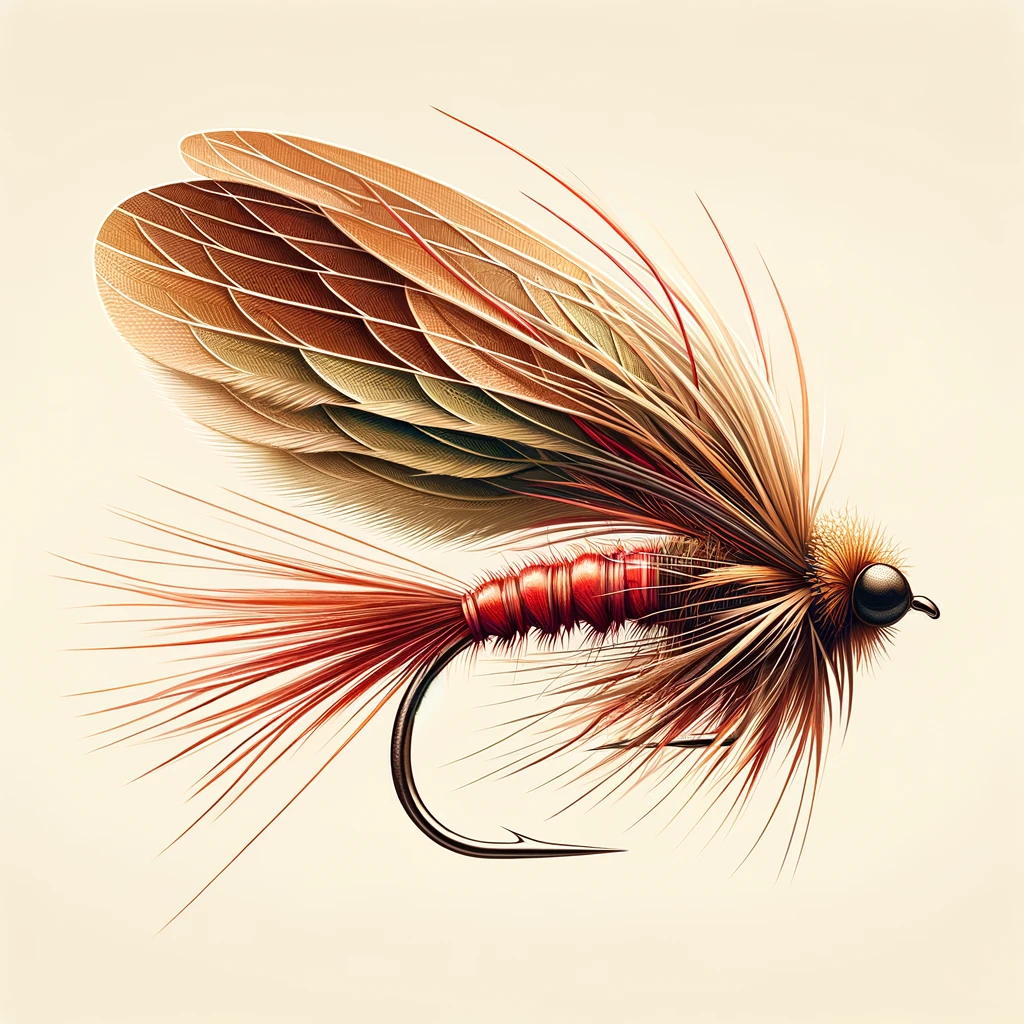
Dun March Brown
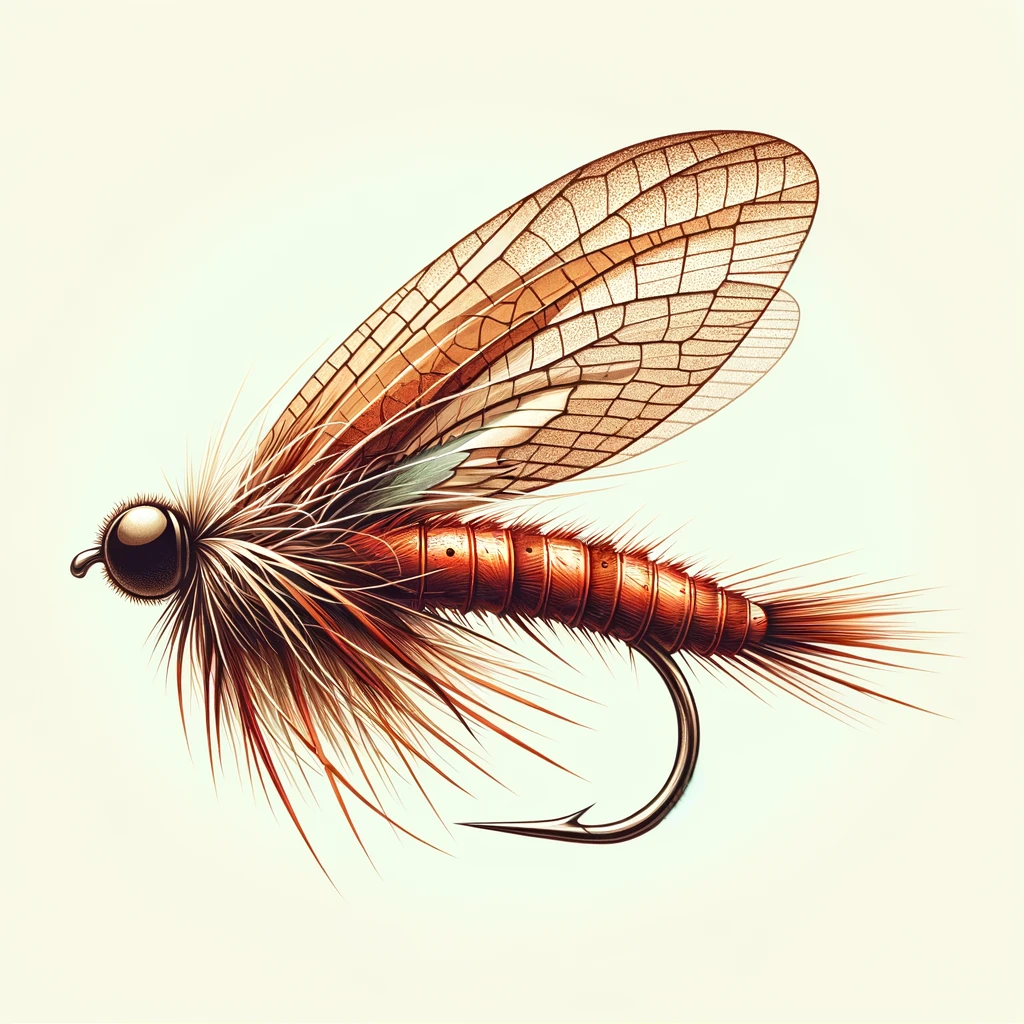
Parachute March Brown
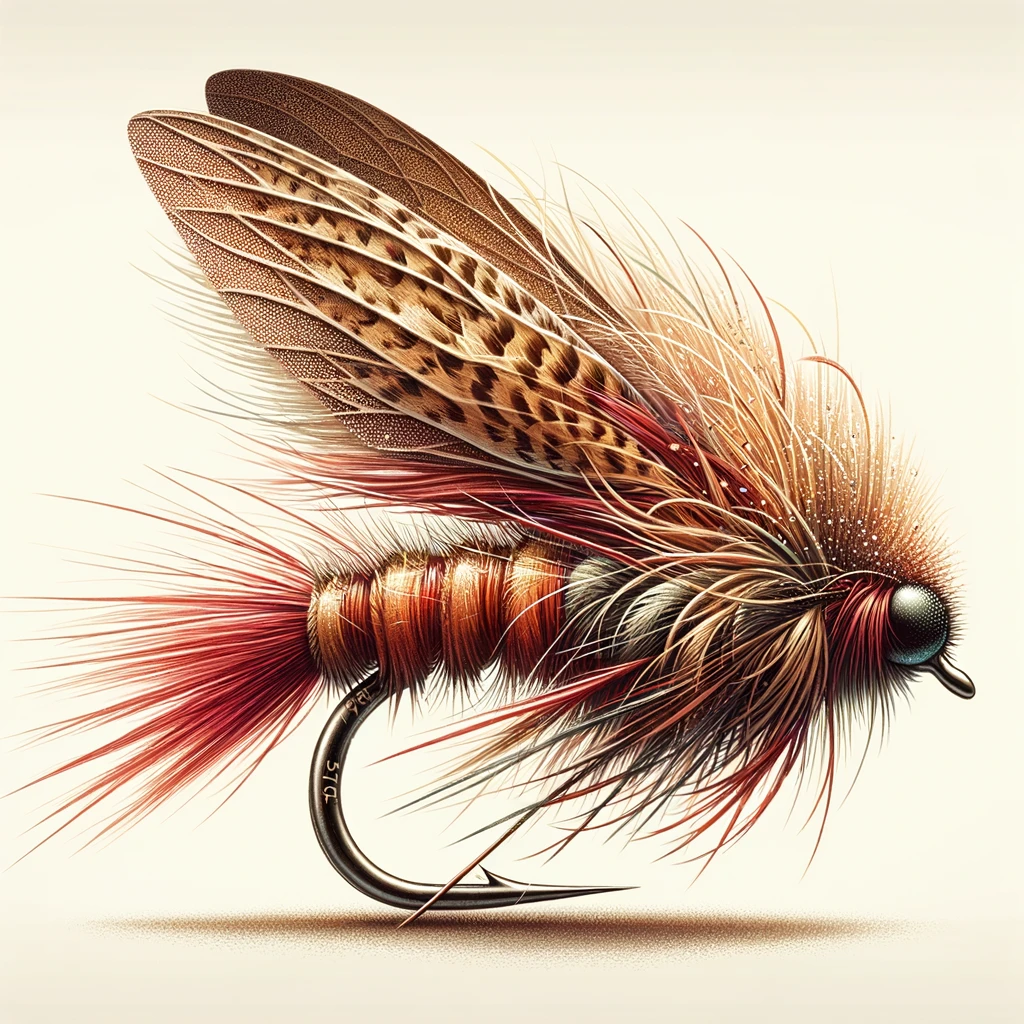
Sparkle Dun March Brown
🎣 Summer’s Symphony: Matching the Hatch with the Season’s Premier Fly Patterns 🦟
Dive into the summer saga of fly fishing as detailed by the Bow River Hatch Chart.
It charts a course through prime hatches and their matching fly patterns. Beginning with the Pale Morning Duns in early June, we transition to the grandeur of Golden Stoneflies and the elegance of Green Drakes.
By July, the waters are alive with the diminutive Tricos. At the same time, Caddis and terrestrial critters like grasshoppers enrich the tableau. The season rounds off with the intriguing Spruce Moths.
Each section meticulously pairs these hatches with the ideal sizes and types of Drys, Emergers, or Nymphs, ensuring anglers are perfectly poised to celebrate the summer’s aquatic ballet.
🌞 The Bow River Hatch Chart Summer Symphony: Decoding the PMD Hatch 🎼
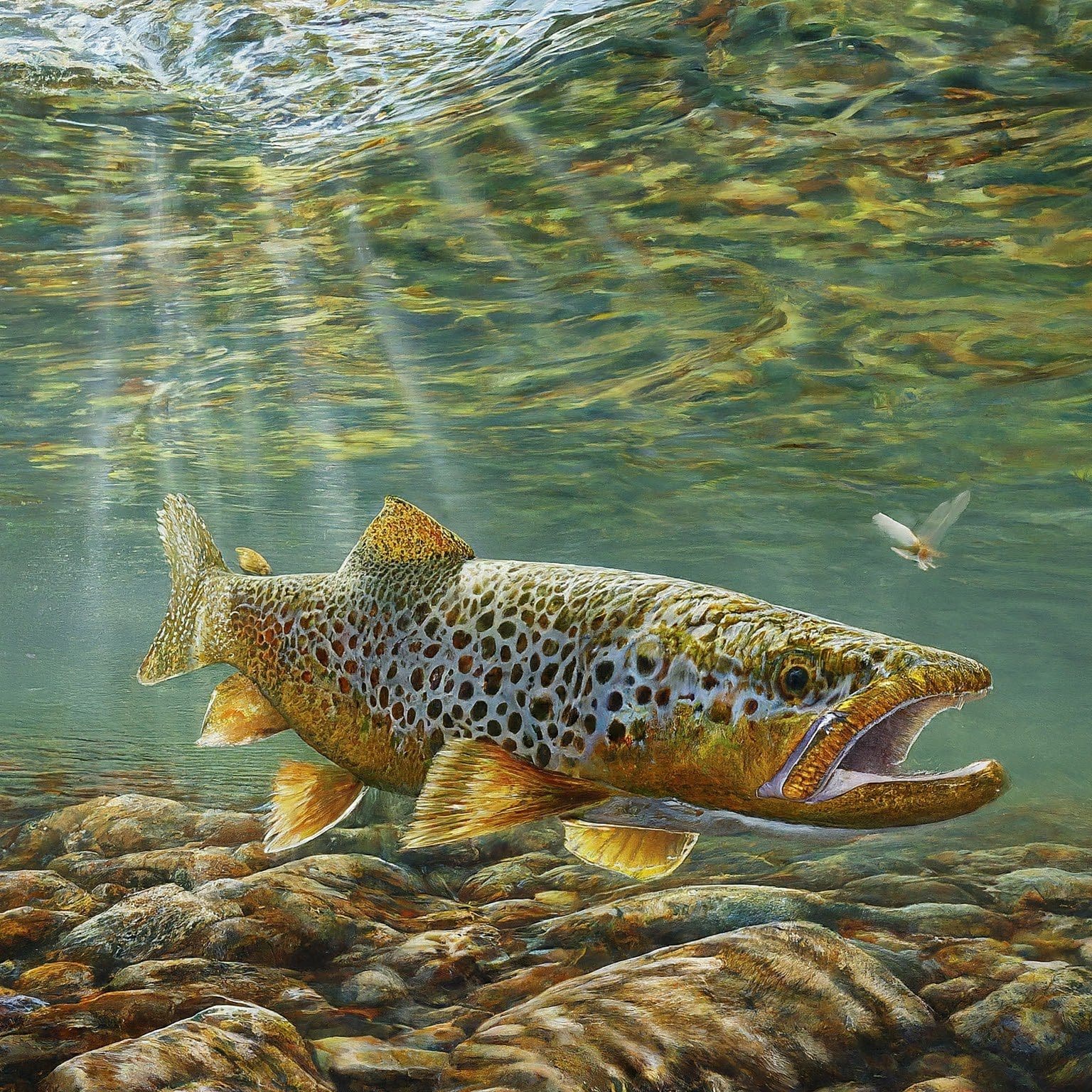
The Bow River bursts with life in summer, and the Pale Morning Dun (PMD) hatch beats at its heart.
These delicate, cream-coloured mayflies are a trout’s summertime treat, and savvy anglers can join the feast with the right flies.
Subsurface Strategy: Enticing Trout with Pale PMD Nymph Imitations
Deeper in the river, PMD nymphs scurry about.
Pheasant Tail or Hare’s Ear Nymphs in pale hues mimic their look, tempting curious trout.
Rising to the Occasion: Mastering PMD Emergers to Attract Surface-Feeding Trout
As nymphs inch closer to the surface, PMD emergers become key.
Barr’s Emerger or RS2 in PMD colours, fished just below the surface, entice rising trout.
Surface Delights: Perfecting the Dry Fly Feast with PMD Imitations
Adult PMDs gracefully land on the water.
PMD Sparkle Duns, PMD Comparaduns, and No Hackle PMDs mirror these resting insects, offering a dry fly feast for trout.
High Visibility Heroes: Parachute PMDs and Adams for Unmatched Surface Imitation
Parachute Adams in PMD colours or Parachute PMDs offer exceptional visibility, mimicking the mayflies and staying afloat in various light conditions.
Evening Encore: Rusty Spinners Seal the Deal in the PMD Lifecycle Drama
After mating, PMDs return to the water as spinners.
Rusty Spinners in pale yellow or cream fished in the late evening tempt trout targeting these fluttering insects.
Mastering the Bow River Ballet: A Tactical Guide to the PMD Hatch from Nymphs to Spinners
Hatch Time? Master the Bow River Hatch Chart Like a Pro!
- Unlock the secrets: Hatch Chart guides your summer adventure.
- Observe keenly: Watch trout behaviour and hatch progression.
- Start with nymphs & emergers: Mimic pre-emergent insects.
- Transition to dries: Match hatching duns for rising trout.
- Spinners at dusk: Entice feeding fish with evening patterns.
- Match the hatch: Size, colour, and presentation are key.
- Unparalleled success: Master the rhythm to unlock the river’s secrets.
Ready to elevate your game? Hit the shop now and conquer the Bow with these favourites!
- Captivating Pheasant Tail Nymph: A fly fisher’s go-to with its intricate brown and copper design.
- Precision and Perfection: The Barr’s Emerger Fly in PMD Colours for Fly Fishing Enthusiasts.
- Sleek and Effective: The No Hackle PMD Fly, a Game-Changer for Fly Fishing Enthusiasts.
🔥 PMD Essentials: Proven Patterns to Master the Hatch
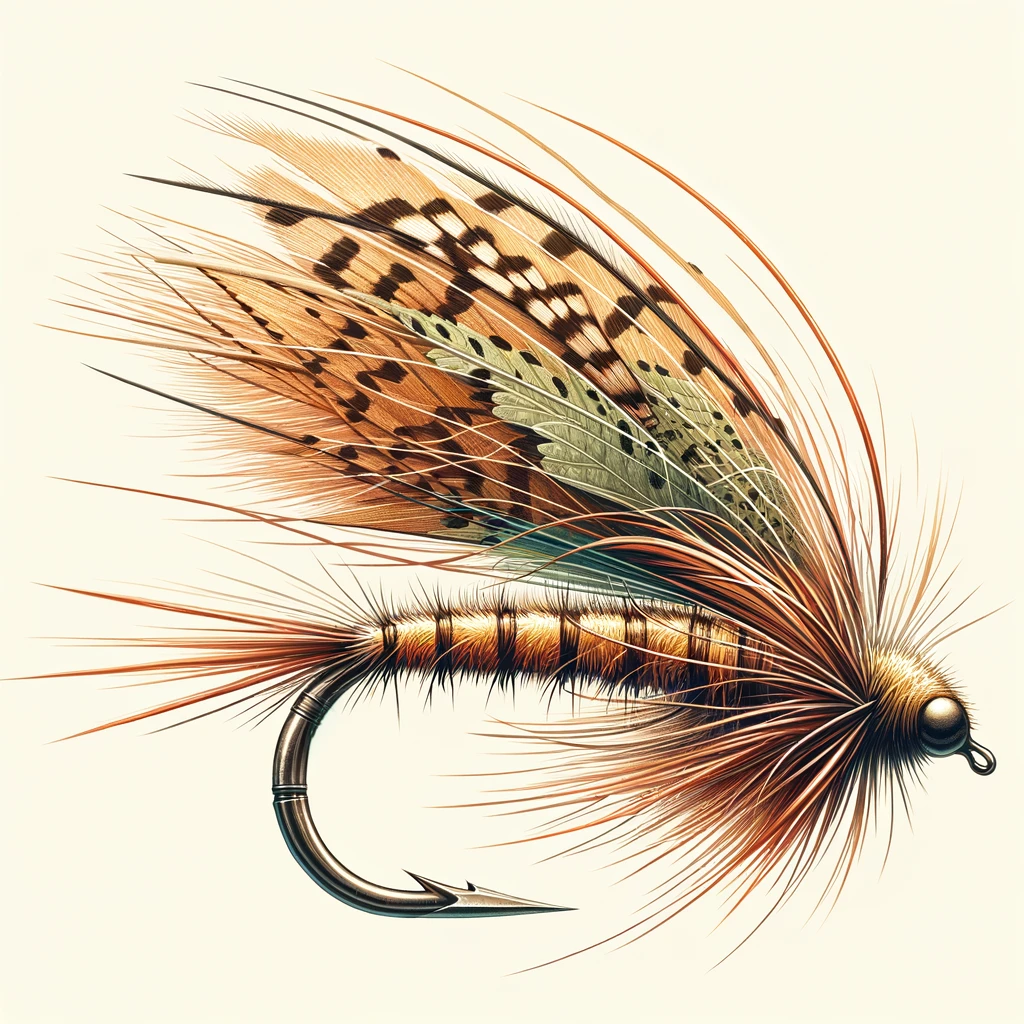
Captivating Pheasant Tail Nymph
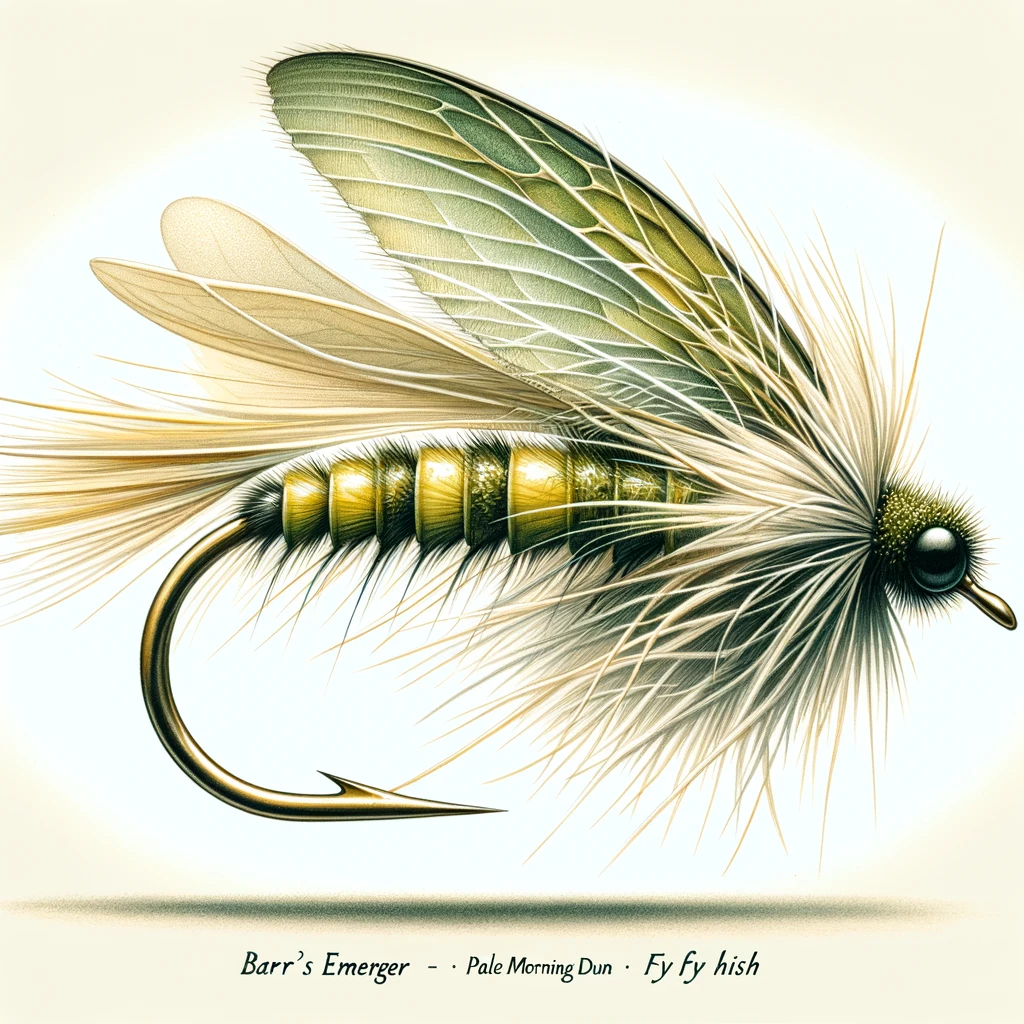
Precision and Perfection
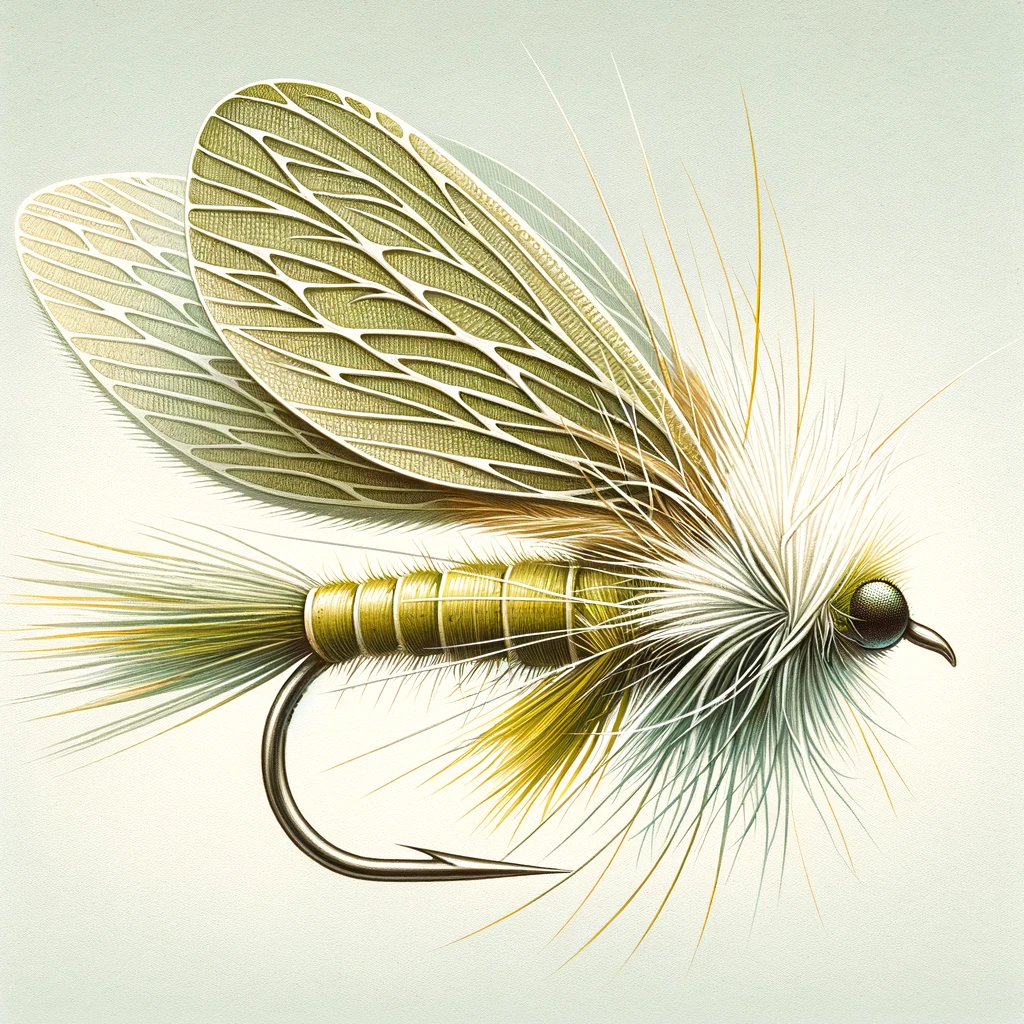
Sleek and Effective
🪰 Bow River Hatch Chart Golden Stoneflies: A Feast for Bow River Trout 🐟
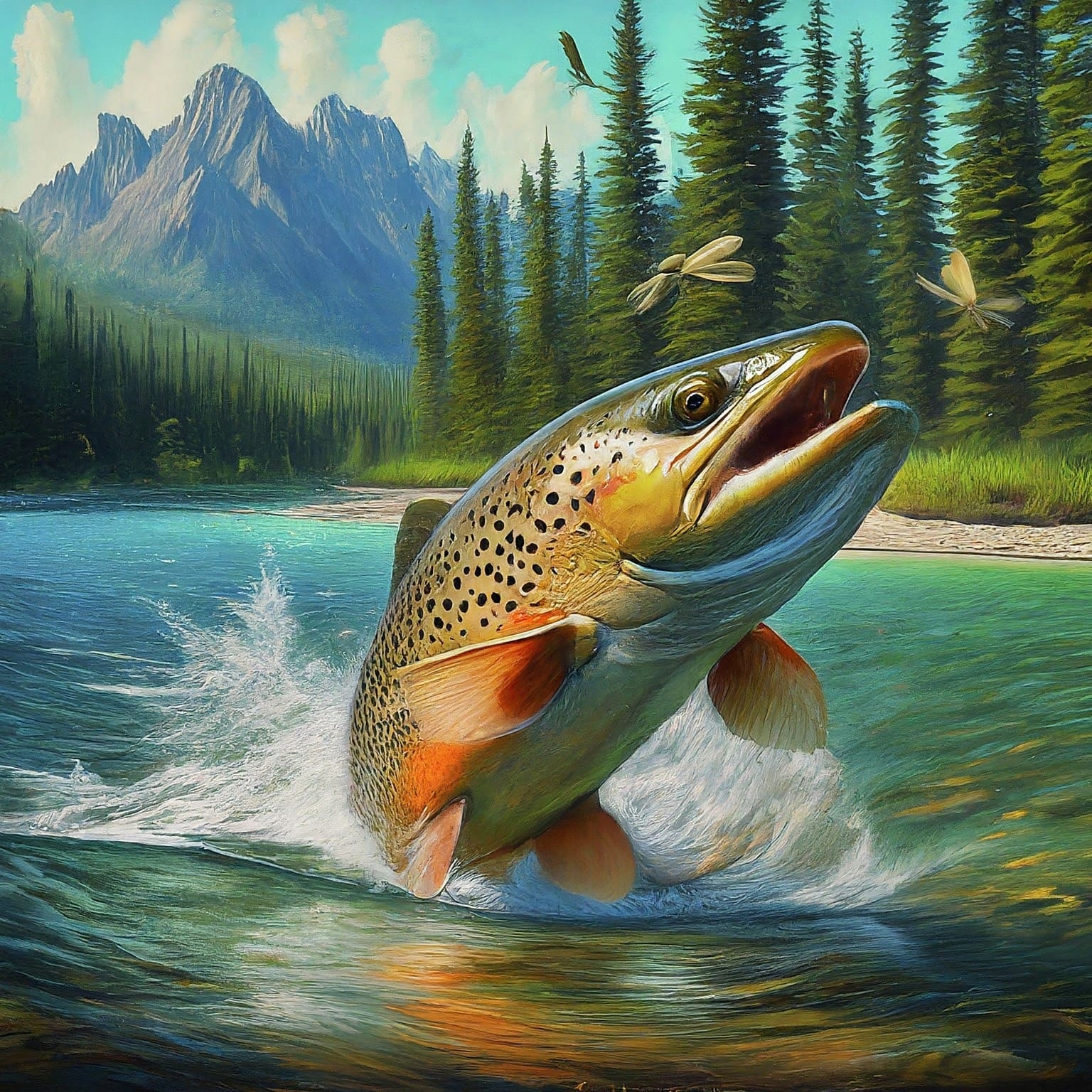
We are calling all anglers! Get ready for a summer symphony on the Bow River – the Golden Stonefly hatch!
These big bugs bring big opportunities for big catches.
Hooking Success: Matching the Hatch with Stonefly Imitations
Trout love these juicy insects, so mimic them with the right flies.
Subsurface Strategy: Enticing Trout with Hefty Stonefly Nymph Patterns
Before they take flight, stoneflies live as nymphs.
Use big flies like Golden Stone Nymph or 20 Incher Stone to trick hungry trout.
Fish these close to the bottom, where nymphs hide among rocks.
Emergence and Imitation: Capturing the Clumsy Flight of Stoneflies with Precision
When they emerge, stoneflies become clumsy flyers.
Stimulator, Chubby Chernobyl, and Foam Golden Stone flies in golden hues are perfect imitations.
Fish these on the surface near banks and overhangs, where they gather.
Surface Spectacle: Mimicking the Clumsy Flight of Emerging Stoneflies
The change from nymph to adult is a vulnerable time.
Use a submerged Stimulator or large soft hackle to mimic this stage and catch trout mid-transformation.
Flashy Attractors: Luring Trout with Bold and Vibrant Stonefly Patterns
Sometimes, big and flashy works best.
Madam X, Turk’s Tarantula, or Royal Stimulator flies can grab attention, especially in fast water or when fish feed aggressively.
Prime Habitats: Targeting Stonefly Hotspots at Optimal Times
Look for fast-flowing riffles and rocky sections – prime stonefly territory.
Early mornings and evenings are prime time when stoneflies hatch and mate.
Adaptive Angling: Reading the River’s Clues for Stonefly Success
Hatch Time! Adapt and Conquer on the Bow
The river speaks! Watch for clues:
- Nymphs crawling: Fish nymphs just below the surface.
- Adults flying: Match their size and silhouette with your fly.
- Spent flies floating: Fish emerger patterns to imitate hatching insects.
Adapt your tactics, and success is yours!
The Bow River Hatch Chart is your starting point, but the river holds the answers. Be observant, adjust your flies, and enjoy the thrill of the hatch!
Ready to catch what’s hatching? Shop now and stock up on the flies you need!
- Madam X fly: Mimics Stonefly patterns.
- Foam Golden Stone fly: Durable buoyancy.
- Golden Stone Nymph fly: Fly tying art.
🔥 Stonefly Favorites: Proven Patterns for the Bow River Hatch
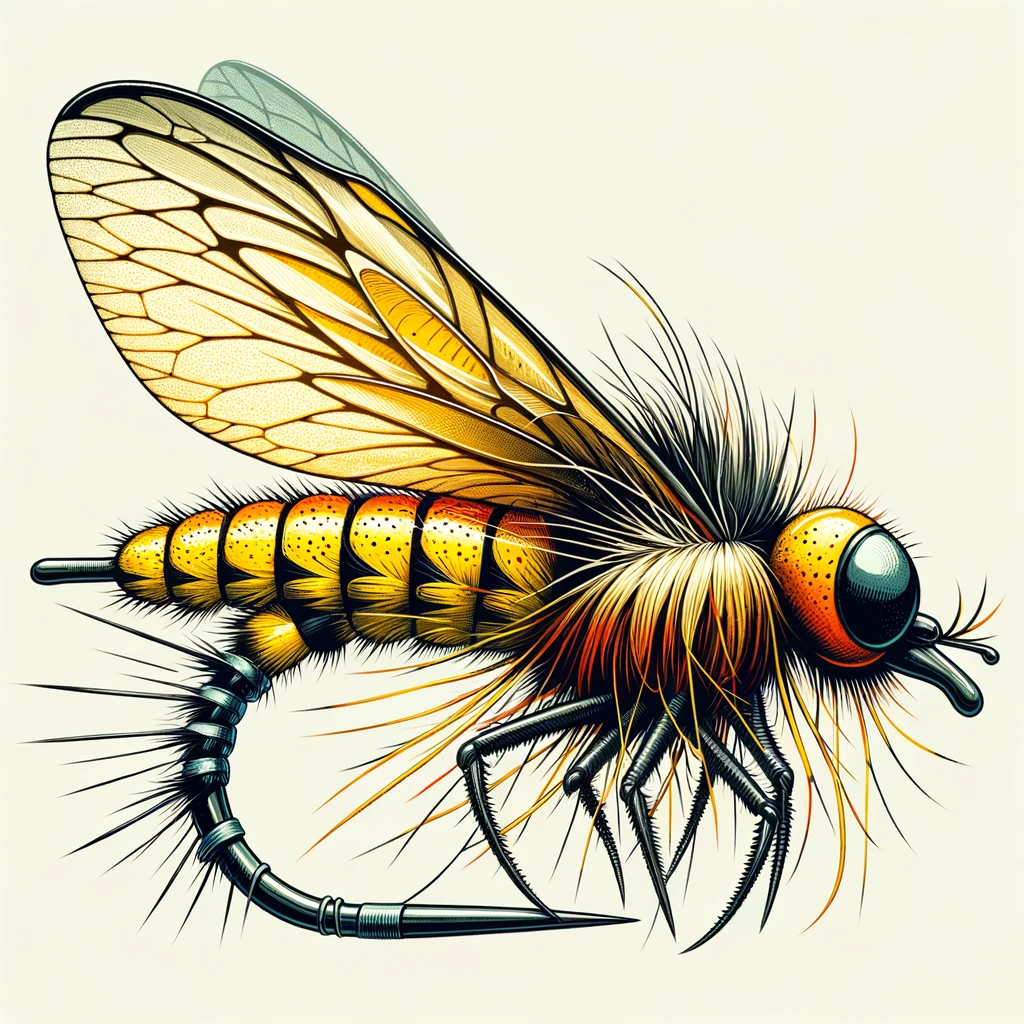
Madam X

Foam Golden Stone
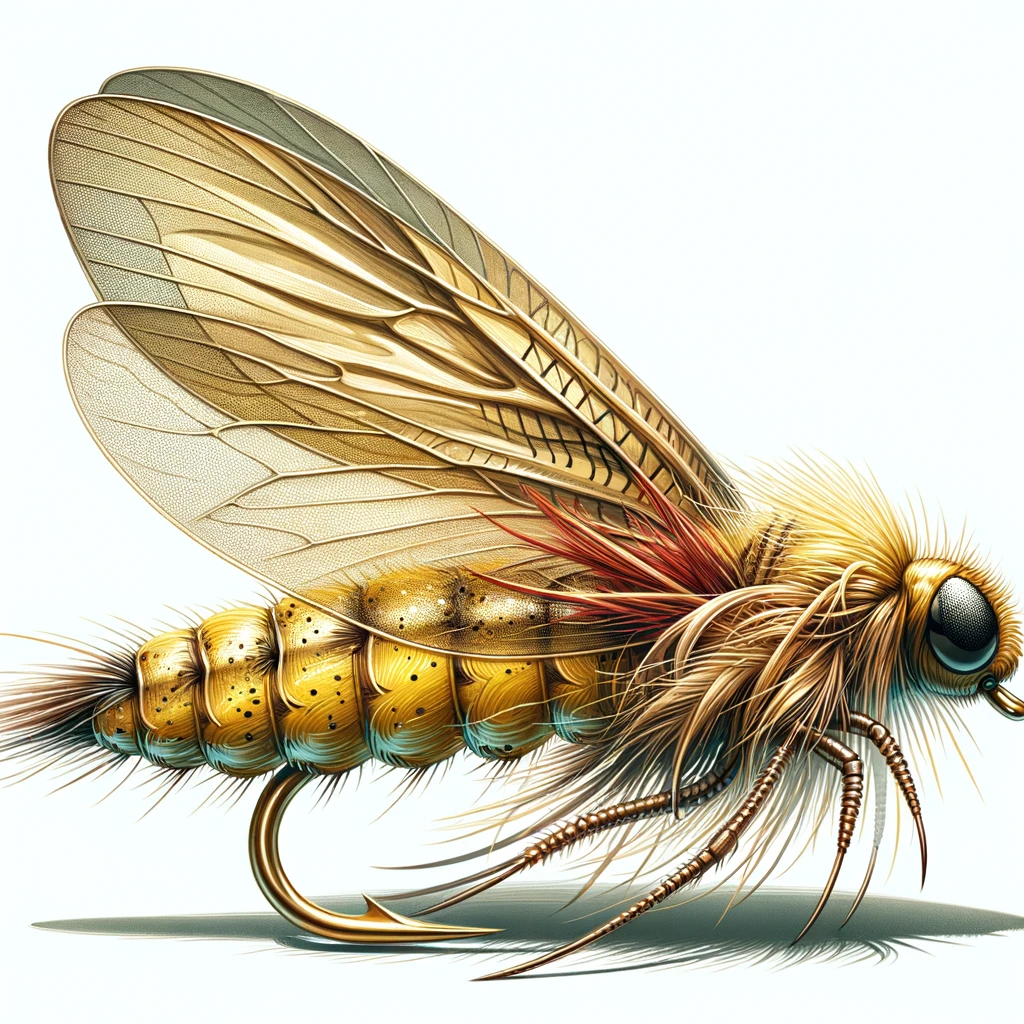
Golden Stone Nymph
📊 Bow River Hatch Chart: Mastering the Green Drake! 🐟
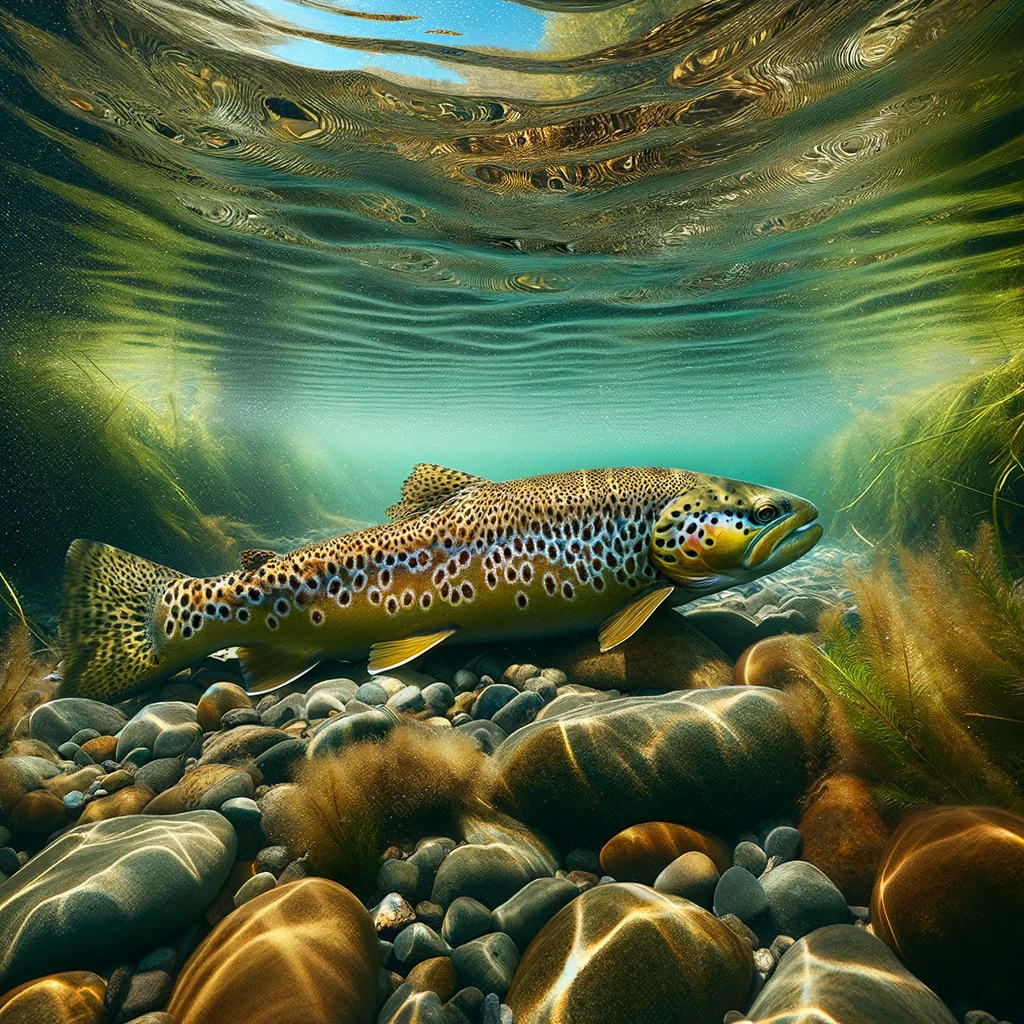
The Bow River’s Green Drake hatch is a fly fisher’s dream!
These big, beautiful bugs bring hungry trout to the surface, making for epic dry fly fishing.
But to snag these trophies, you gotta match the hatch!
Underwater Appetizers: Mastering Green Drake Nymph Patterns for Pre-Hatch Success
Before the big show, Green Drake nymphs are trout snacks.
Tie on Green Drake Nymph or Pheasant Tail Nymph patterns (size #10–#14) to mimic these tasty treats.
Fish ’em deep in the water for best results.
Transformation Phase: Capitalizing on Green Drake Emergers for Surface Strikes
Watch out! The nymphs are changing! Now is the time for Green Drake Emerger or Barr’s Emerger patterns (#10–#14).
Fish ’em just below the surface or right on top, where the magic happens.
Surface Spectacle: Matching the Hatch with Adult Green Drake Patterns
The main event! Adult Green Drakes hatch and trout go wild!
Tie on Green Drake Dun, Comparadun Green Drake, or Sparkle Dun patterns (#10–#14) to match these beauties.
Fish ’em on the surface for explosive action.
Evening Encore: Targeting the Final Act with Green Drake Spinner Patterns
After love, Green Drakes become spinners. Don’t miss out!
Use Rusty Spinner or Green Drake Spinner patterns (#10–#14) in the evenings or early mornings when spinners take flight.
Reading the River: Adapting Your Fly Selection to Trout Feeding Patterns
Watch the trout! They’ll tell you what stage of the hatch they’re feeding on.
Switch flies to match their menu for maximum success!
Charting Success: Navigating Green Drake Hatches with the Bow River Hatch Chart
Green Drake Hatch: Your Key to Bow River Glory!
Green Drakes are here, and trophy trout are waiting! This hatch chart is your secret weapon for landing giants.
Match the hatch, match the glory:
- Big flies for big bugs: Green Drakes are sizeable, so use flies that match their size.
- Presentation is key: Imitate their natural movements for irresistible attraction.
- Don’t miss out: Green Drakes won’t last forever! Stock up at the shop now!
Tight lines and Green Drake glory awaits. Shop Now!
- Pheasant Tail Nymph fly: Showcasing the art of fly fishing through its detailed design.
- Barr’s Emerger fly: Blending natural and synthetic materials for optimal fly fishing effectiveness.
- Comparadun fly: Featuring a wide, flat deer hair wing designed to mimic the natural spread of insect wings perfectly.
📈 Bow River Hatch Chart: Trico Time! 🎣
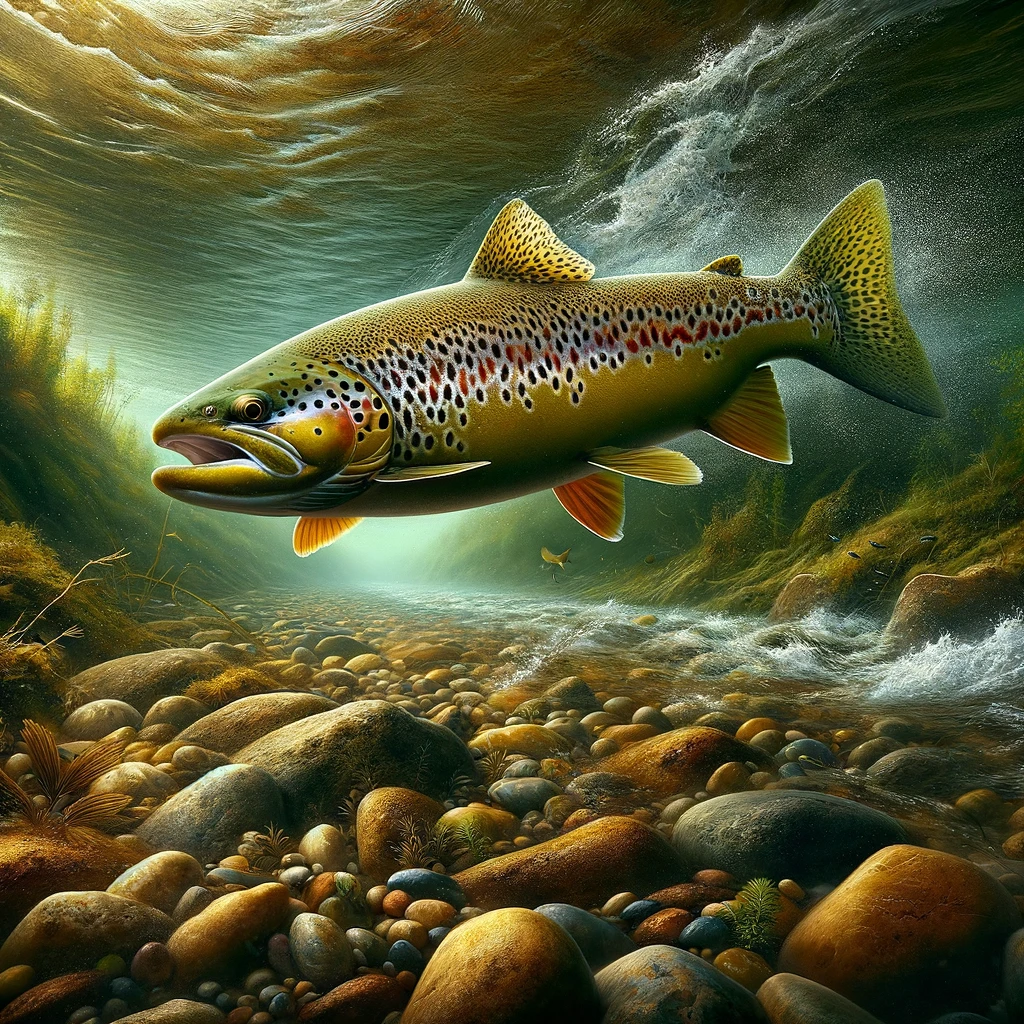
Tiny Trico mayflies swarm the Bow River in summer, driving trout wild!
But these little bugs are tricky to catch. Here’s your guide to mastering the Trico hatch:
Captured in motion, a muscular brown trout navigates the Bow River’s depths, its journey mapped by the Hatch Chart.
Pre-Dawn Prelude: Mastering Tiny Trico Nymphs for Early Morning Strikes
Before the show, fish tiny nymphs (#20–#24) like the Trico Nymph early in the morning.
Mimic their movement in the water for hungry trout.
Emergence Alert: Perfecting the Art of Trico Emergers for Selective Trout
Watch for nymphs changing! Use RS2, Trico Emerger, or CDC Loop Wing Emergers (#20–#24) just below the surface.
These bugs are easy pickings for trout.
Feast on the Surface: Matching Adult Tricos with Precision Patterns
Main course alert! Trout love adult Tricos resting on the water.
Tie on Trico Dun or Trico Parachute (#20–#24) and present them gently, just like the actual bug.
Twilight Banquet: Capitalizing on the Trico Spinner Fall for Trophy Trout
Lovebirds fall as spinners, and it’s dinner time for trout!
Use Trico Spinner or Rusty Spinner (#20–#24) late in the hatch when these guys hit the water.
Strategic Advantage: Using Trico Clusters to Imitate a Spinner Smorgasbord
Tiny flies, big feast! When trout gobble up groups of Trico spinners, try a Trico Cluster for extra tempting treats.
Precision and Patience: The Keys to Success in Trico Fishing
Trico fishing is delicate. Use thin lines (6X–7X) and cast carefully.
Watch the trout, see what stage they’re eating, and match your fly to trick them every time!
Unlocking Trico Triumphs: Master the Bow River Hatch Chart for Expert Angling
Trico Time on the Bow: Your Ticket to Trout Triumph!
Unlock the secrets of Trico’s success on the Bow River! This hatch chart guides you to mastering these tiny terrors and filling your creel with eager trout.
Follow these tips and become a Trico tamer:
- Match the hatch: Tiny flies with delicate wings are the key.
- Fish it right: Early mornings and calm currents are prime time.
- Be stealthy: Light tippet and precise casts are essential.
Ready to experience Trico’s triumph? Take advantage of this, stock up on essential Trico flies at the shop now!
- Crafted for Precision: The Comparadun Fly with Its Signature Deer Hair Wing, a Master of Mimicry on the Water.
- Precision Crafted: The Trico Nymph, Delicately Mimicking Nature’s Finest Hatch.
- Crafted for Stealth: The CDC Loop Wing Emerger is a Fly Fishing Marvel with Its Signature Looped Wing.
🔥 Tiny But Mighty: Must-Have Trico Patterns
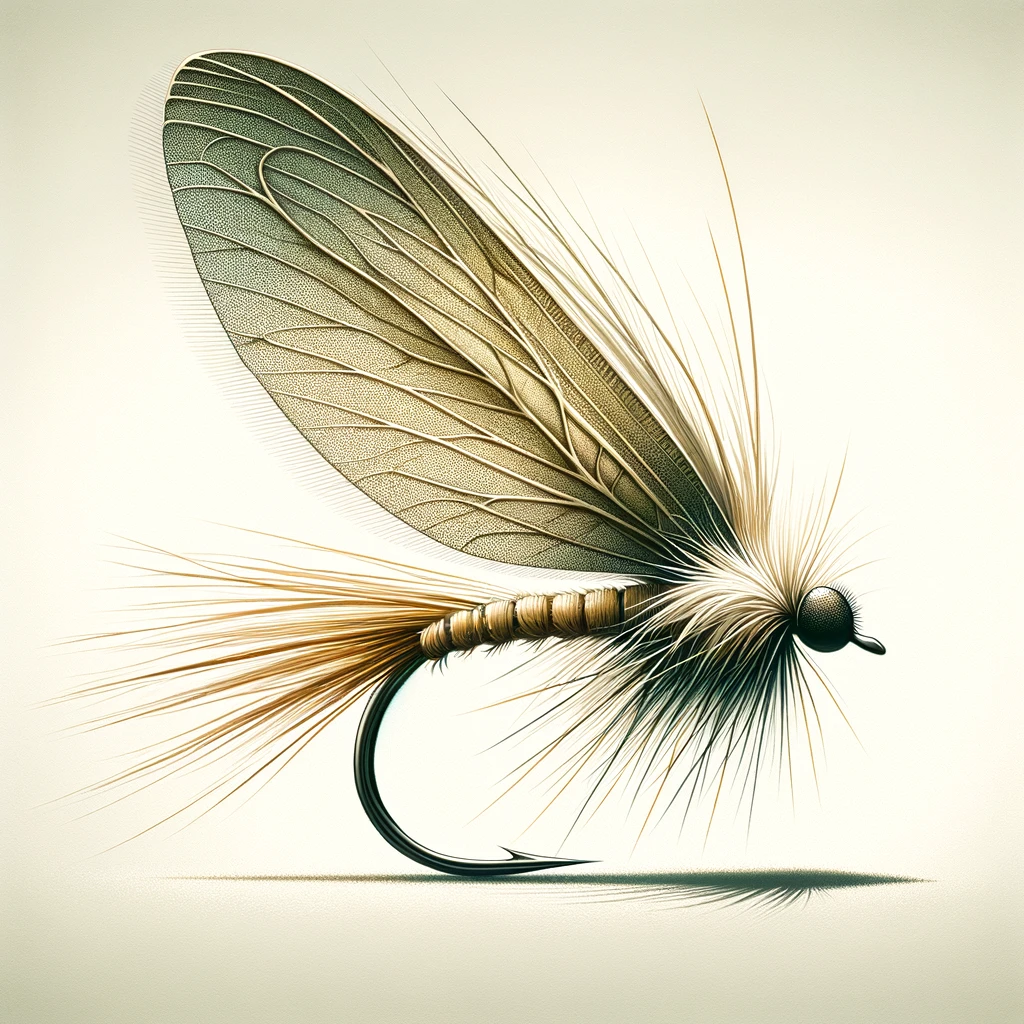
The Comparadun Fly
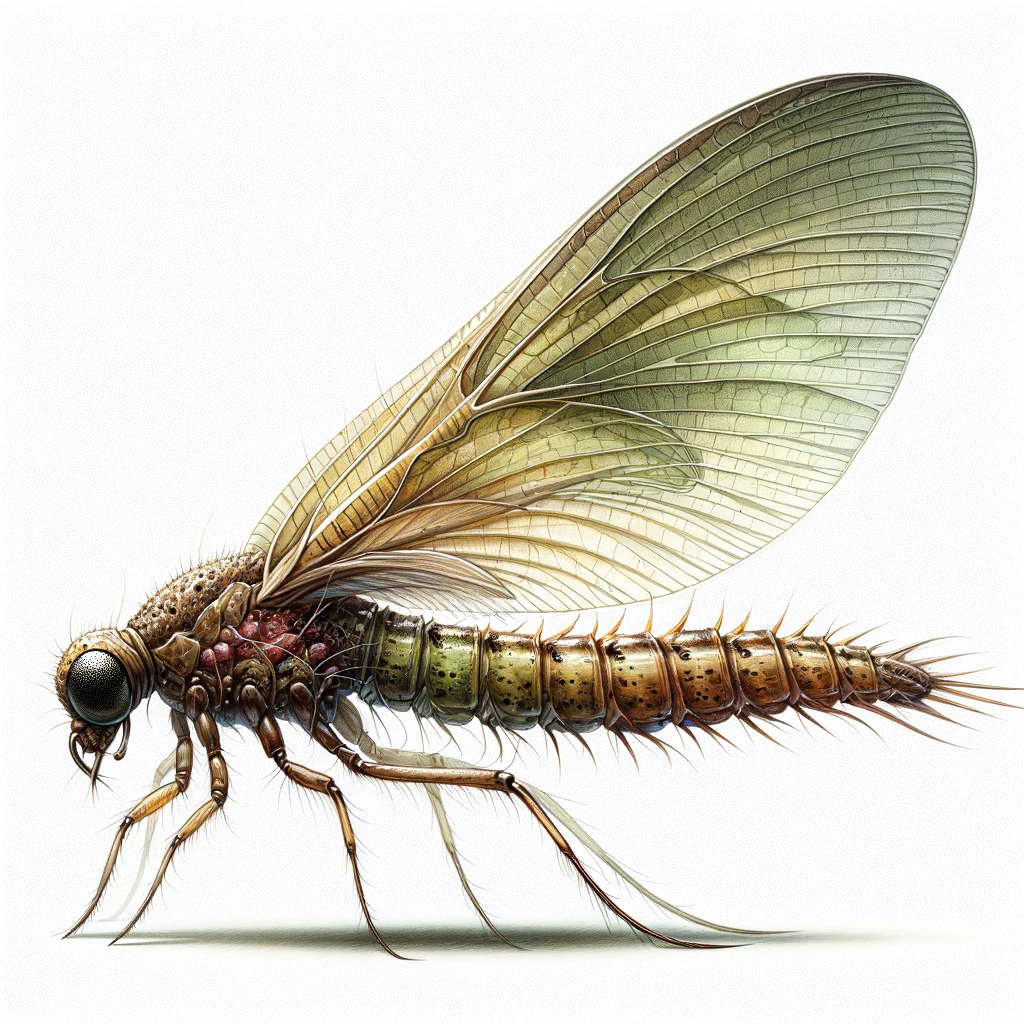
The Trico Nymph
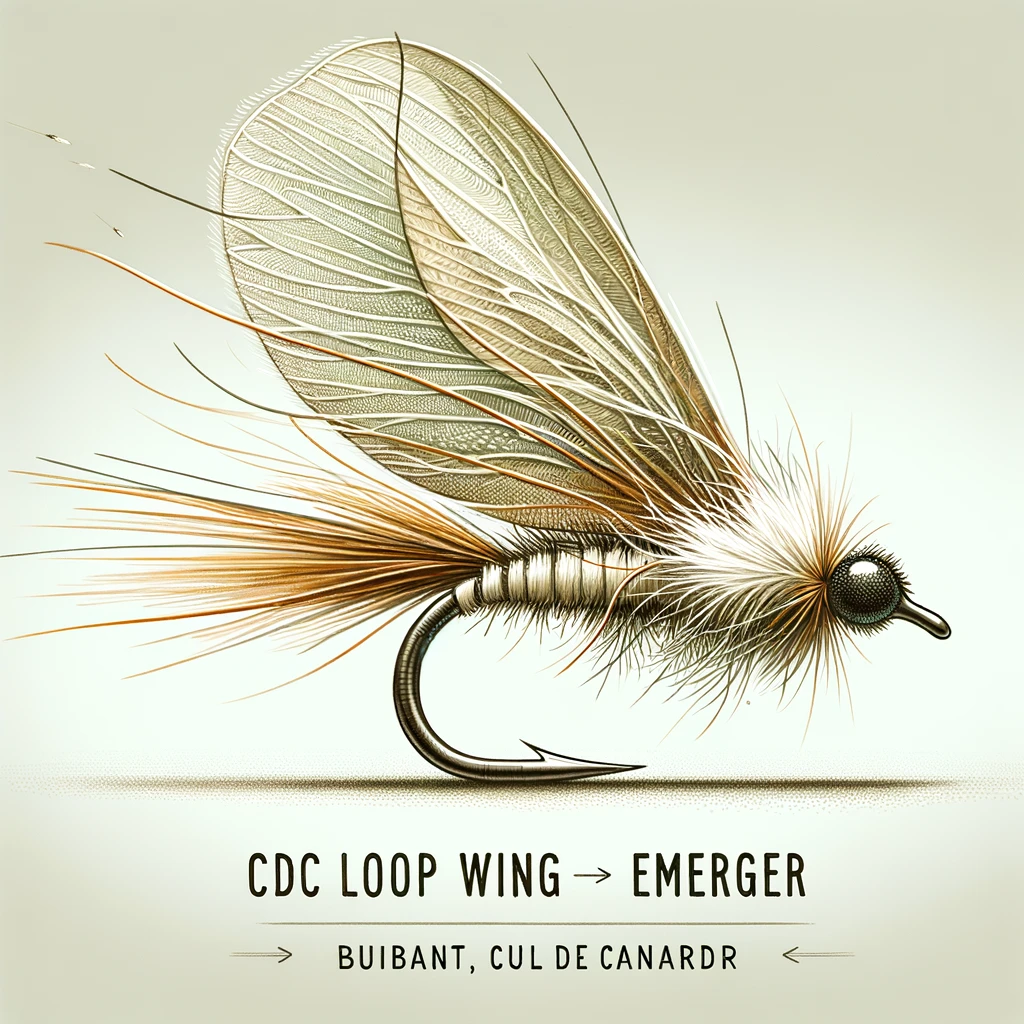
The CDC Loop Wing Emerger
📊 Bow River Hatch Chart: Bug Buffet! 🐟
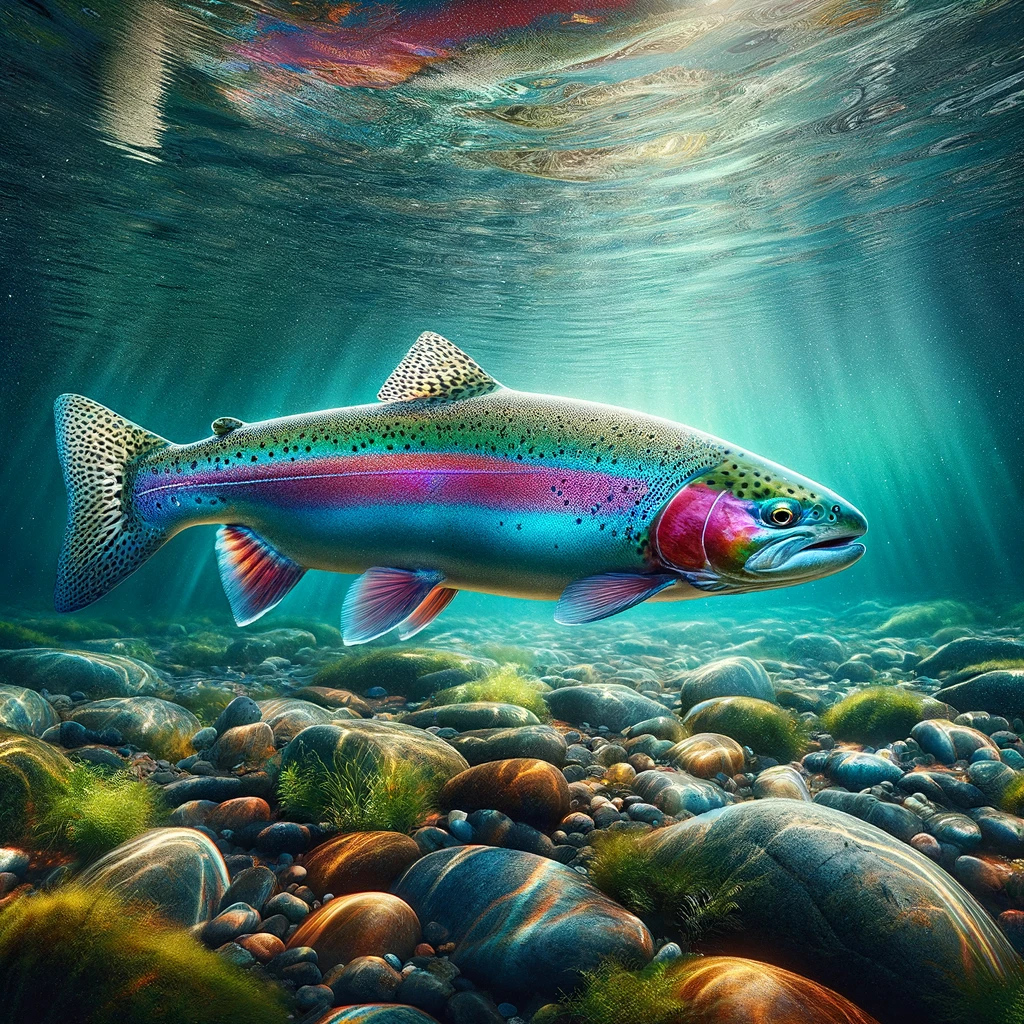
Summer on the Bow River explodes with life!
Caddisflies and landlubbers like grasshoppers and beetles join the party, making trout hungry for various snacks.
Here’s your guide to mastering the Caddis & Terrestrial feast:
Captured in its element, a rainbow trout glides through the Bow River, its journey illuminated by the Hatch Chart.
Key Caddis Patterns: From Emergence to Rest, Mastering the Mimicry
- Elk Hair Caddis: This classic fly mimics adult caddis (#10–#18). Match the size to the actual bugs!
- X-Caddis: Emerging caddis in disguise! This fly has a trailing shuck for extra realism (#12–#18).
- CDC Caddis: Resting caddis alert! This fly uses special feathers to resemble a bug chilling on the water (#14–#18).
Terrestrial Triumphs: Hoppers, Ants, and Beetles – Summer’s Top Menu Items
- Foam Hopper: Grasshoppers love summer! This fly looks just like one (#8–#12). Big bug, big catch!
- Ants: Tiny black or brown ants (#14–#20) are a summer must-have, especially when it’s windy.
- Beetles: They’re by the river too! Foam Beetle or Deer Hair Beetle (#12–#18) can be beetle-icious.
Late-Summer Flies: Spruce Moths and Chernobyl Ants as Irresistible Trout Snacks
- Spruce Moth: In some areas, these moths are late-summer treats for trout (#12–#16). Give them a try!
- Chernobyl Ant: This big, fluffy fly (#8–#12) can be any landlubber — hopper, beetle, you name it!
Adaptive Strategies on the Bow River: Matching the Hatch from Dawn to Dusk
The Bow River is a smorgasbord! Change your flies based on what you see.
Start with nymphs or emergers early, then switch to dry flies when bugs are hatching.
When it’s windy or landlubbers are around, try terrestrial flies!
Watch the trout, see what they’re eating, and match the hatch for success!
Unlocking the Bug Buffet: Master the Bow River Hatch Chart for Fly-Fishing Success
Bow River Bug Bonanza: Your Hatch Chart to Fly-Fishing Fame!
The Bow River’s a smorgasbord for fish! Caddisflies, grasshoppers, and beetles keep the trout feasting.
Become a fly-fishing master:
- Know your hatches: Use the chart to pick the perfect flies.
- Match the meal: Mimic their prey’s size, colour, and movement.
- Strike when the iron’s hot: Fish actively during hatch times.
Ready to join the feeding frenzy? Gear up now at the shop and land your trophy catch!
- Crafted for the Surface: The Elk Hair Caddis is a fly fishing favourite with its signature buoyant wing.
- Perfectly Imitated: The Deer Hair Beetle Fly, a True-to-Life Representation for Fly Fishing Enthusiasts.
- Close to Nature: The Grasshopper Fly, Expertly Tied to Mimic Its Real-World Counterpart for Fly Fishing.
🔥 Summer Essentials: Top Caddis & Terrestrial Fly Picks
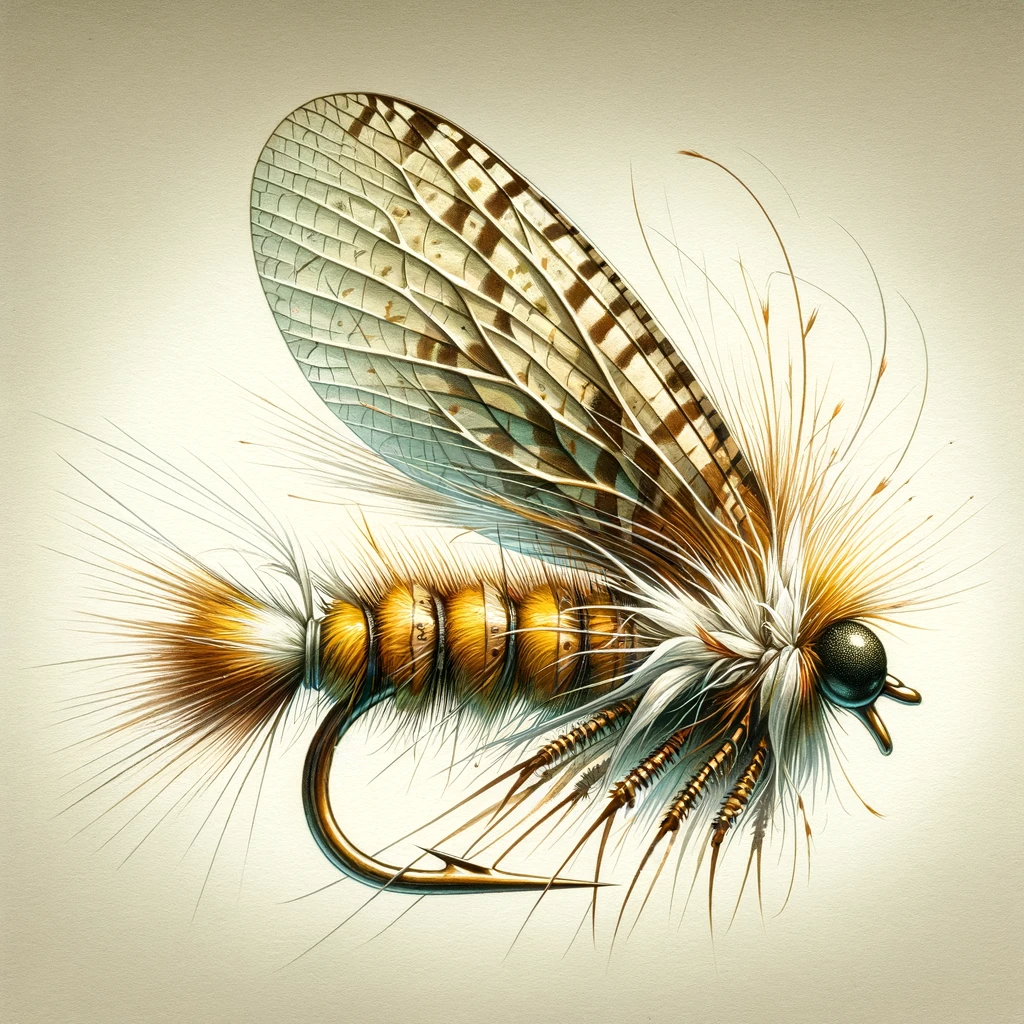
Elk Hair Caddis
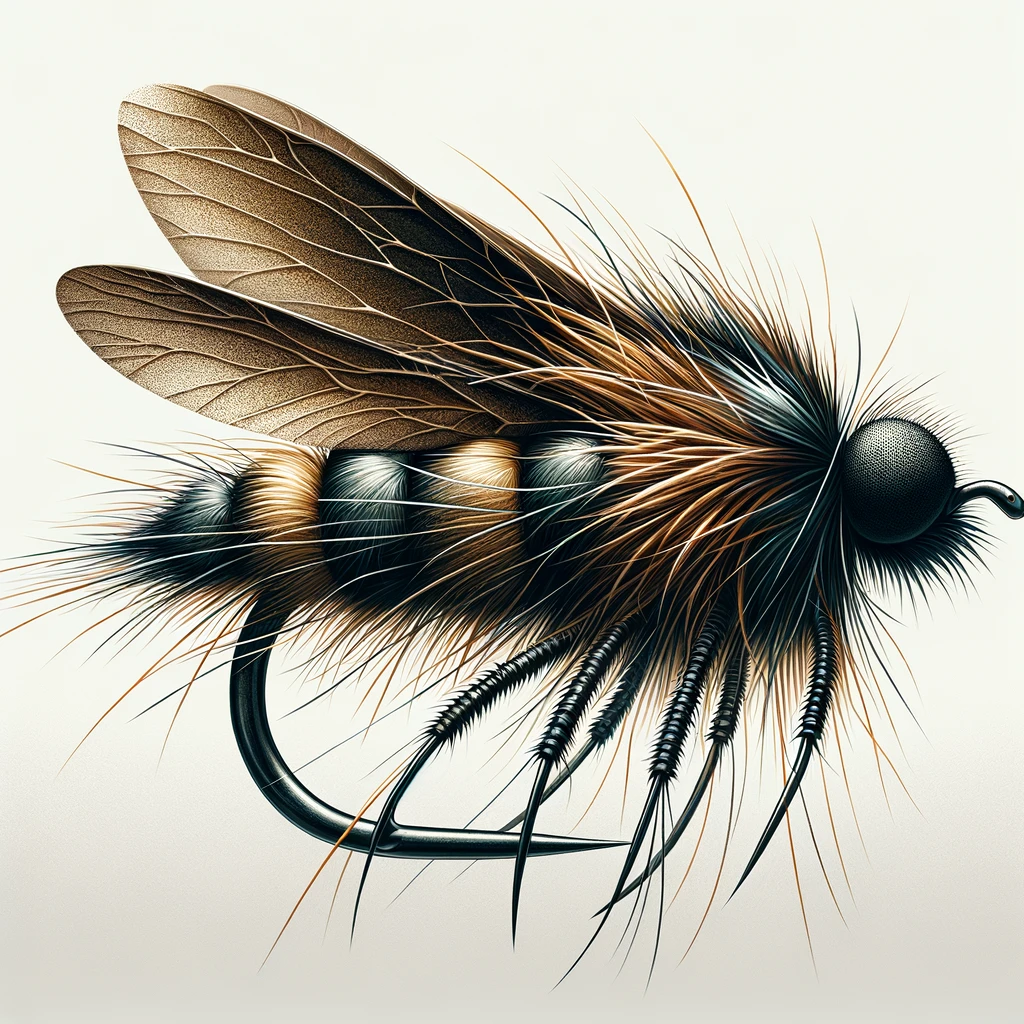
Deer Hair Beetle
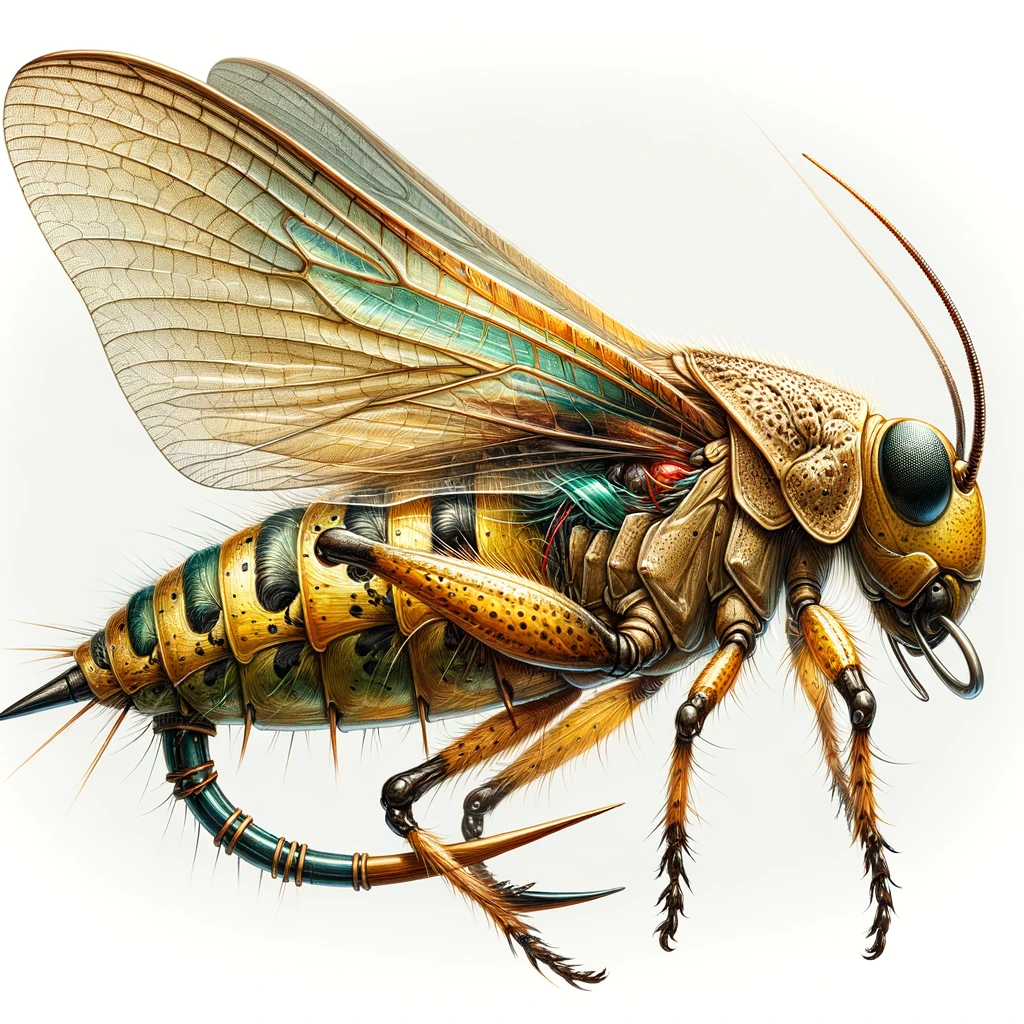
Grasshopper
🌲 Bow River Hatch Chart: Spruce Up Your Fly Game! 🎣
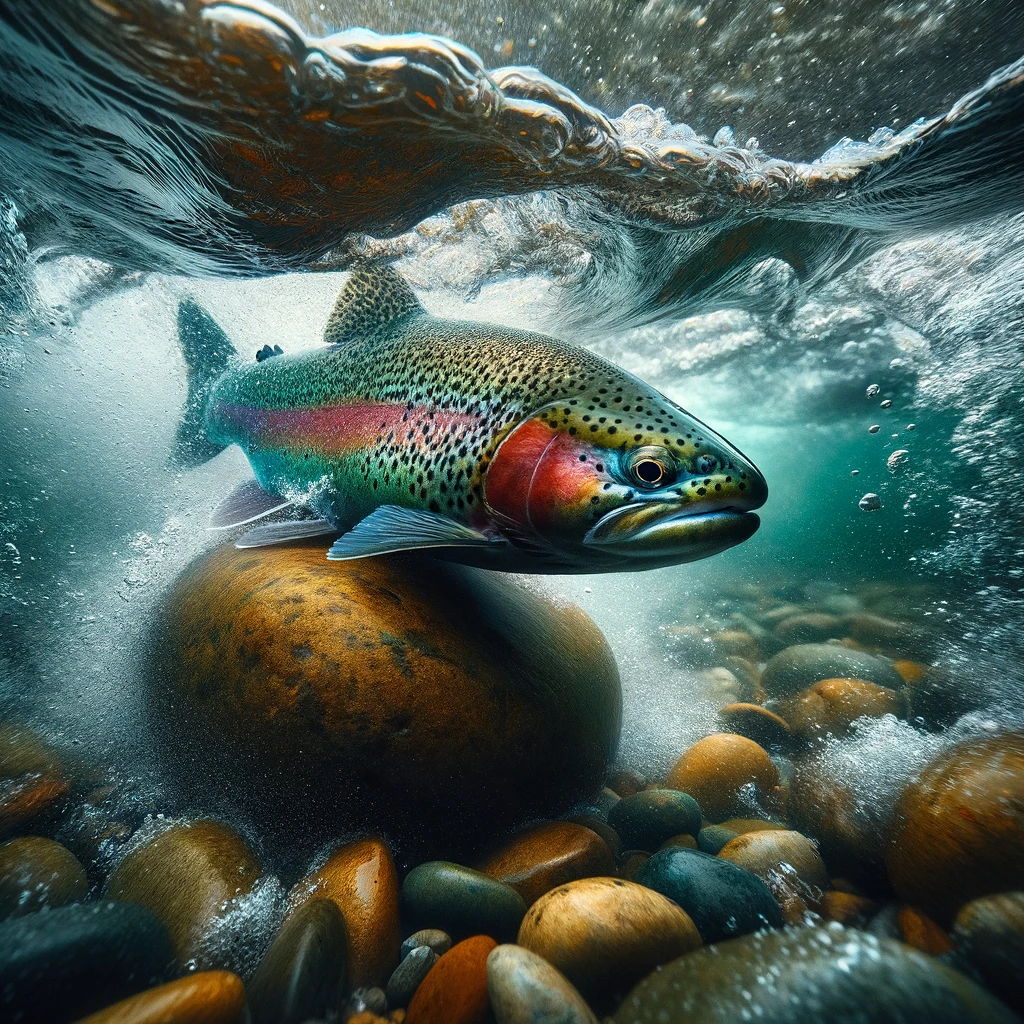
Ever seen a flurry of fluffy brown moths near the Bow River? It’s Spruce Moth time!
These summer visitors turn trout into hungry hunters, and here’s how to join the feast:
Agility in the Current: A Rainbow Trout Navigates the Bow River, Guided by the Hatch Chart’s Wisdom.
Spruce Moth Imitations: From Fluffy CDCs to High-Vis Heroes
- CDC Spruce Moth: Feathery and fluffy, just like the real deal (#12–#16). Trout love the realistic look!
- Stimulator: Not a moth, but it works! Tan or cream, size #12–#16. Big and flashy, perfect moth stand-in.
- Elk Hair Caddis (Big!): Go big! Size #12–#14, match the moth’s colour. Looks like a moth on the water — trout approve!
- Foam Body Spruce Moth: Light and floaty, just like a real moth! Plus, the shape and colour are spot-on. Tasty treat for trout!
- High-Vis Spruce Moth: See your fly easily, even in dim light or with lots of bugs. Catchy moth for tricky conditions!
Mastering the Moth Hatch: Observations and Strategies for Every Trout’s Preference
- Watch the trout: Are they sipping moths off the surface? Use a dry fly! Stuck underwater? Try an emerger.
- Match the hatch: Size and colour matter! Be a moth-mimicking master.
- Gentle landing: Moths land softly. Cast carefully, don’t spook the trout!
Bow River Hatch Chart Spruce Moth Mastery: Essential Tips for Capturing the Attention of Moth-Avid Trout
Spruce Moth Mastery: Your Bow River Guide
Unlock the secrets of the Bow River’s Spruce Moth hatch. This chart is your weapon, packed with pro tips for reeling in hungry trout.
Follow these steps, and success is on the hook:
- Time it right: Early mornings are prime.
- Location, location, location: Spruce forests border the river? You’re in business.
- Match the hatch: Light-coloured flies with splayed wings mimic the fallen moths perfectly.
Ready to experience Spruce Moth glory? Hit the shop now and stock up on your fly-fishing essentials!
- Nature’s Mirror: The CDC Spruce Moth Fly, Perfectly Crafted to Emulate the Delicate Spruce Moth.
- Dazzling by Design: The Stimulator Fly, Combining Size and Color for Unmatched Appeal in the Water.
- Effortless Elegance: The Foam Body Spruce Moth Fly, Crafted for Precision and Lifelike Appeal in Fly Fishing.
🪰 Spruce Moth Specials: Flies That Trigger Trout Strikes<
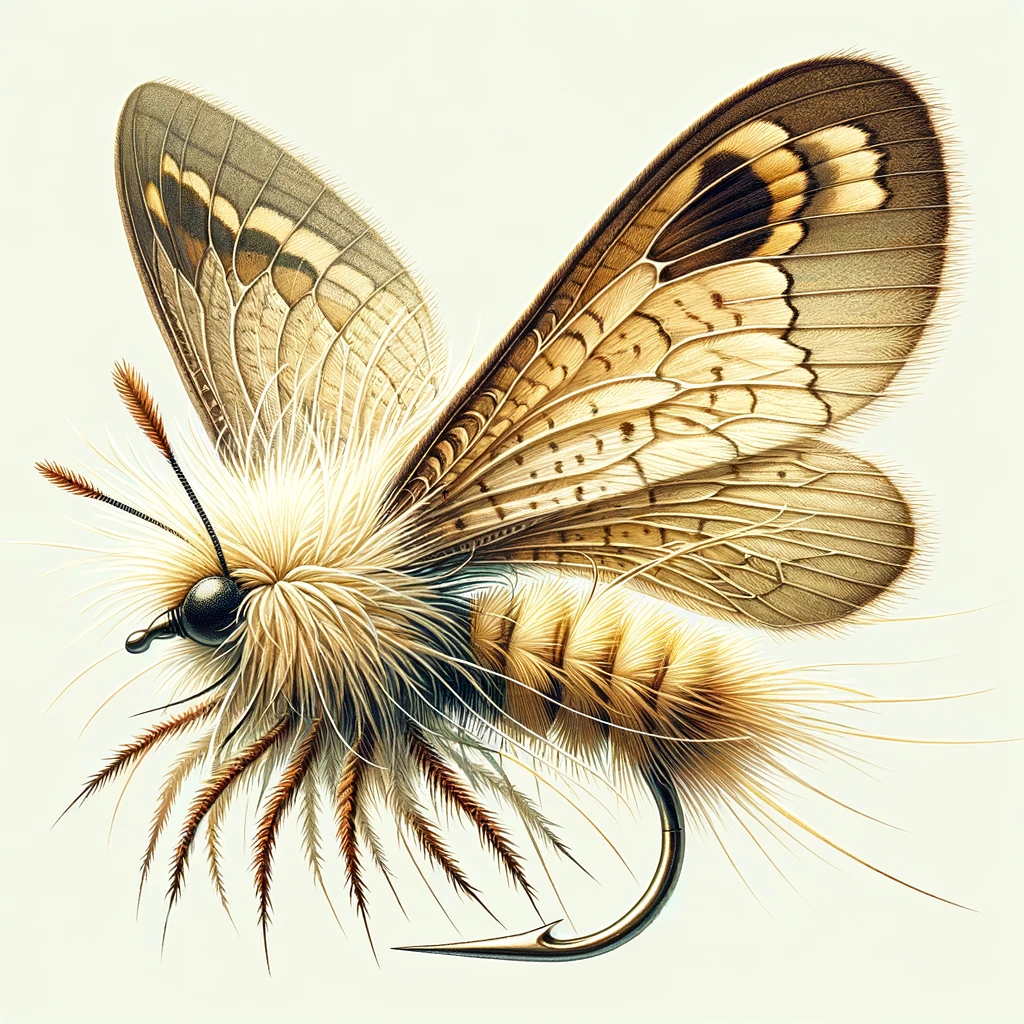
CDC Spruce Moth
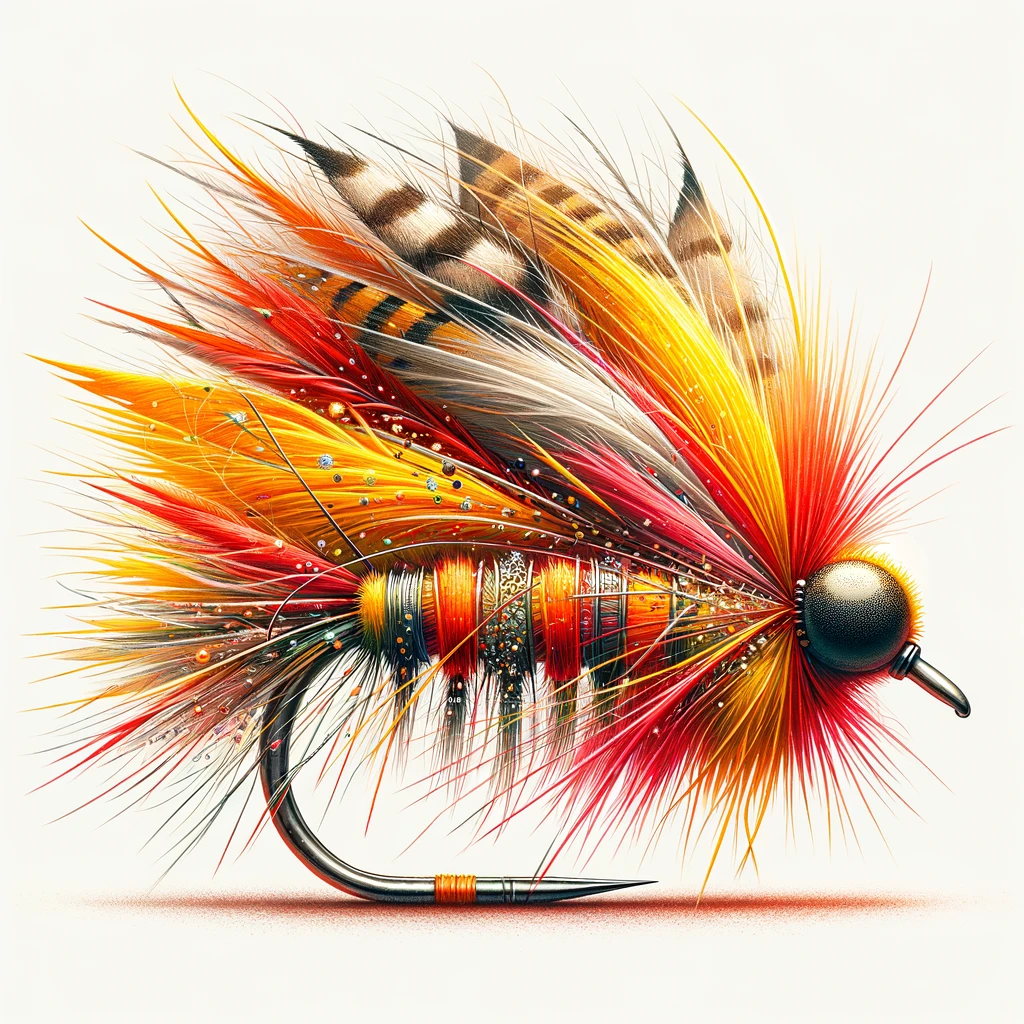
Stimulator
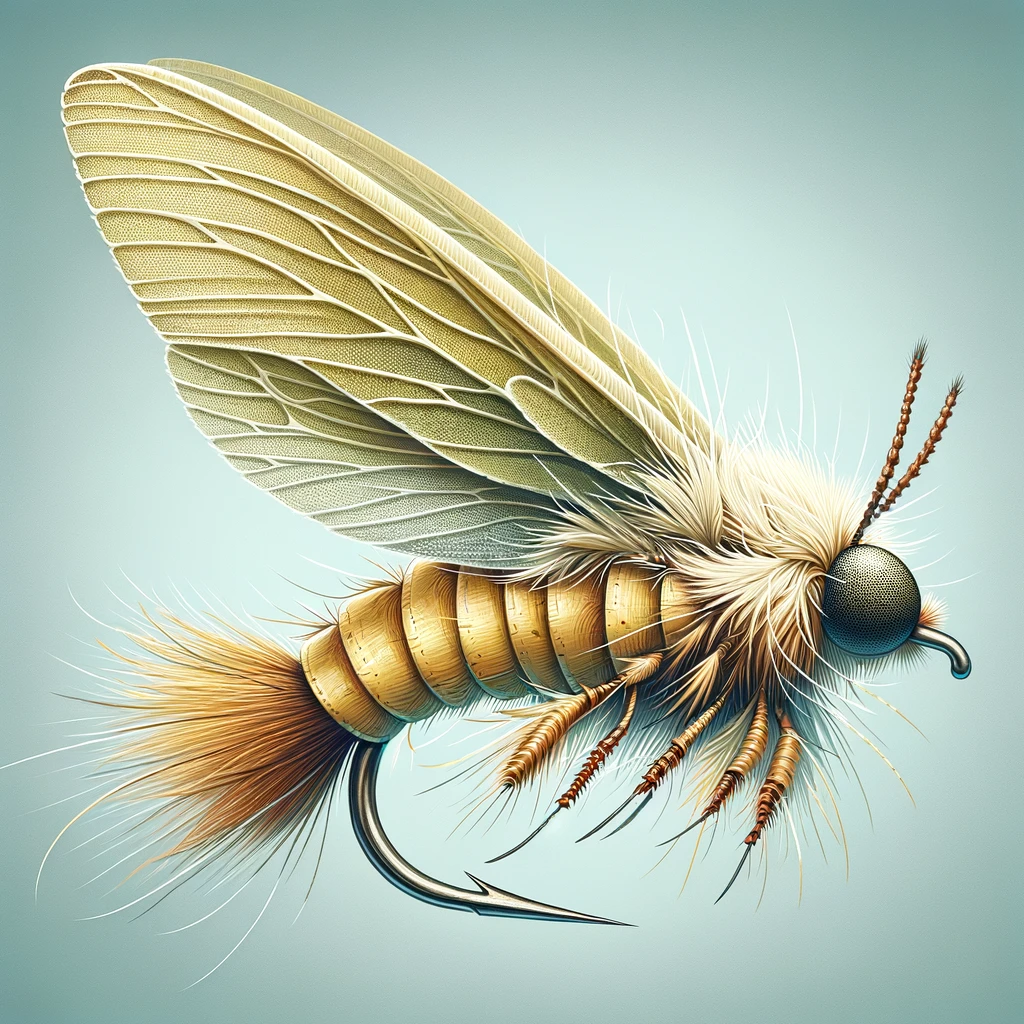
Spruce Moth
🎣 Bow River Hatch Chart: Fall’s Grand Finale! 🍂
September and October bring a final bow to the Bow River’s insect symphony.
From familiar favourites like Blue-winged Olives to the dramatic arrival of the October Caddis, this is your guide to hooking into fall’s bounty.
Seasonal Fly Fishing Guide: Perfecting Your Fly Selection Through the Seasons
- Blue-winged Olives (BWOs): Return for an encore in early September. Dust off your #16–18 flies.
- Mahogany Dun: A dark-winged mayfly that appears mid-September. Go with #14–16 imitations.
- Tricos: Still active until early September. Keep #20–24 flies ready.
- October Caddis: The grand finale! Arrives mid-October. Use #10–14 Elk Hair Caddis, X-Caddis, or Micro Caddis.
- Midges: Year-round action. Count on #20–24 Griffith’s Gnats, Emergent Midges, or Parachute Adams.
Fall Fishing on the Bow: Mastering the Hatch and Making Memories
So grab your fly rod, study the Bow River Hatch Chart, and get ready to experience the magic of fall fishing on the Bow!
Tight lines!
🎣 Conclusion: The Bow River Awaits – Are You Ready? 🌊
Bow River Hatch Chart: The Symphony of Life
As the seasons turn and the Bow River continues its ceaseless flow, the anticipation among anglers grows.
The Bow River Hatch Chart serves as a tool and a testament to the vibrant ecosystem thriving within these waters.
It’s your gateway to understanding — a map to navigate the complex interplay of life beneath the surface.
With this chart in hand, you’re more than an observer; you’re a participant in the age-old dance of predator and prey.
A Unique Challenge and Opportunity
With its clear, cold waters and abundant hatches, the Bow River offers a unique challenge and opportunity for fly fishers.
Whether you’re a seasoned veteran or a newcomer eager to cast your line into these storied waters, the hatch chart is your indispensable ally.
It’s a guide that illuminates the path to becoming not just a visitor — but a steward of this aquatic wonderland.
Keys to Success on the Bow
Remember, the keys to success on the Bow are as much about patience and observation as the right equipment.
Watching the water for the subtle cues of nymphs crawling, adults taking flight, or spent flies signalling the end of their journey can transform a day on the river from mere fishing to a masterclass in natural harmony.
Mastery Over Presentation
Adaptability, too, is crucial. Match the hatch with the appropriate nymphs, emergers, dries, and spinners.
Having a keen eye for detail and a deep understanding of the hatch chart are essential in this art form.
Mastery over your presentation, achieving precision in size, colour, and technique, will elevate your experience — making every cast a note in the symphony of the Bow.
Your Invitation to the River’s Rhythm
The Bow River Hatch Chart is more than a guide; it’s your invitation to become part of the river’s rhythm, to write your chapter in the ongoing saga of the Bow.
So, are you ready to step into the flow — to test your skills against the wiles of the river’s inhabitants?
Gear Up and Embrace the Challenge
Gear up and get ready for an unforgettable adventure on the Bow River.
With patience, observation, and the right flies, the magic of the Bow is yours to unlock.
Tight lines and unforgettable experiences await you. The Bow River calls — are you ready to answer?
📘 Share the Knowledge: Spread the Word on Bow River Hatch Chart 🎣
We’re grateful you explored the Bow River Hatch Chart 2024 with us.
If you found it insightful, please share it with fellow anglers.
Dive Deeper into Fishing Adventures with these Articles on SunnyDaysGo.com:
-
📍 The Popular Crowsnest River: Your Essential Fishing Report & Guide
Uncover fishing secrets and key spots on the Crowsnest River.
-
🎯 Waterton River Fishing 2024 Ultimate How To Guide
Master the art of fishing in Waterton River with this comprehensive guide.
-
🏕️ Best Belly River Alberta Camping Fly Fishing Ultimate Guide
Combine camping and fly fishing in Belly River for an unforgettable experience.
-
🎣 A Guide to Trout Stocked Ponds and Lakes in Alberta
Navigate Alberta’s best-stocked waters for trout fishing with this detailed guide.
-
🌲 Cold Lake Provincial Park – The Ultimate Outdoor Adventure
Experience the thrill of outdoor activities and fishing in Cold Lake Provincial Park.
Happy fishing and exploring! Use the Bow River Hatch Chart and get those rods bending!! Tight Lines!!!
